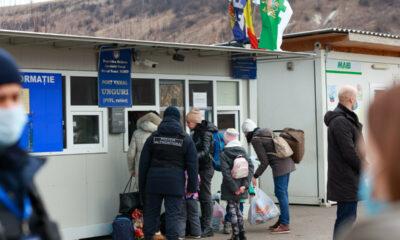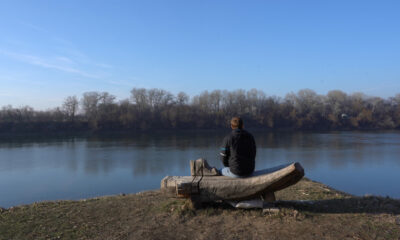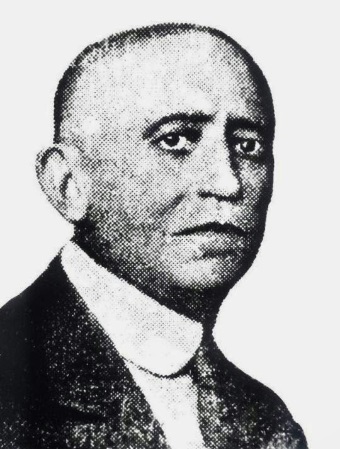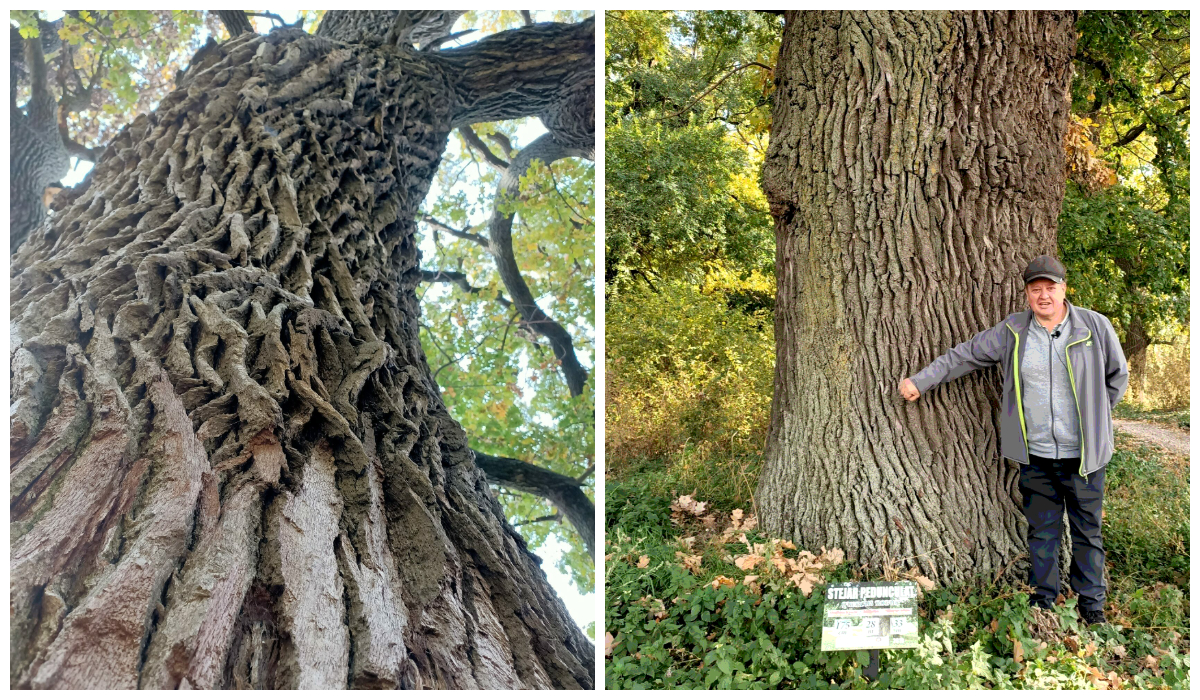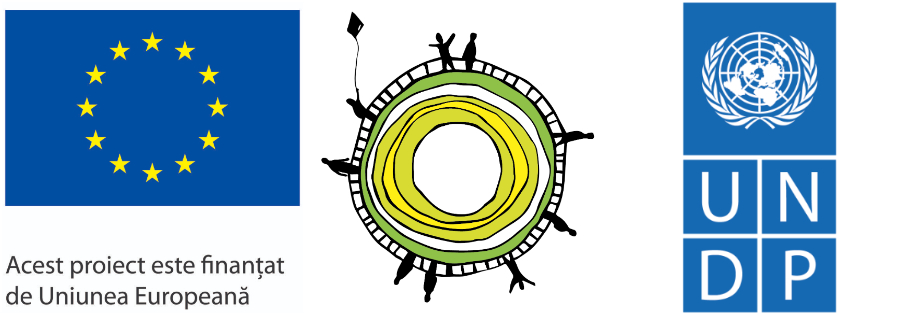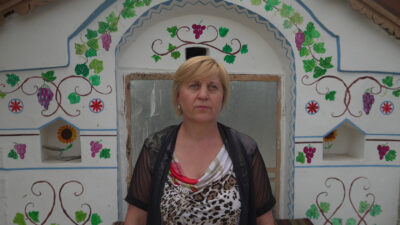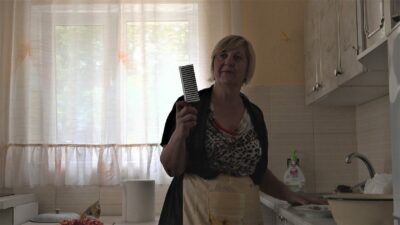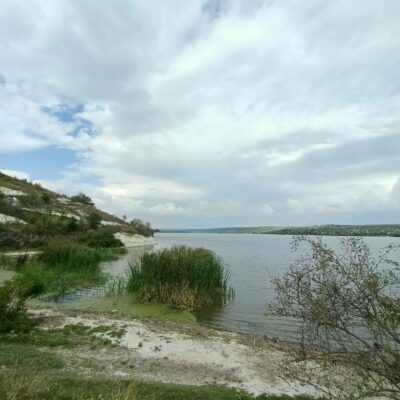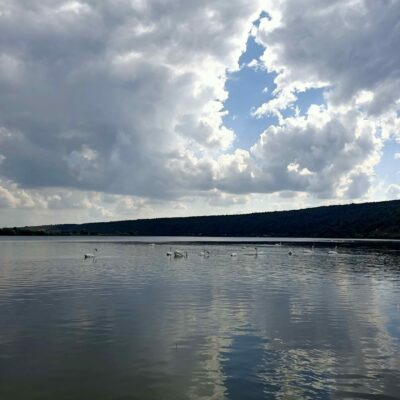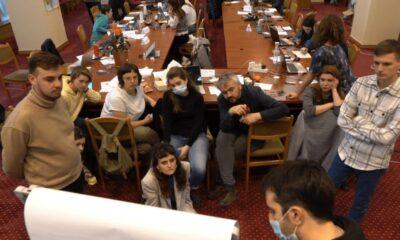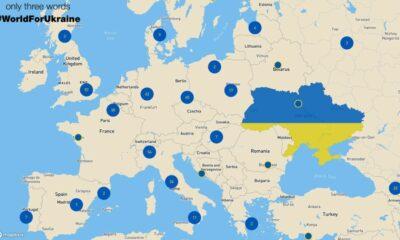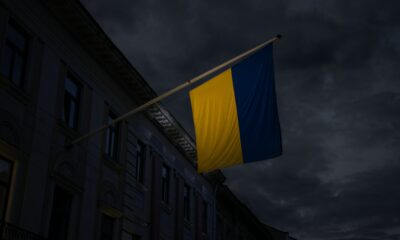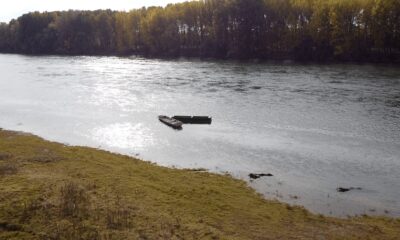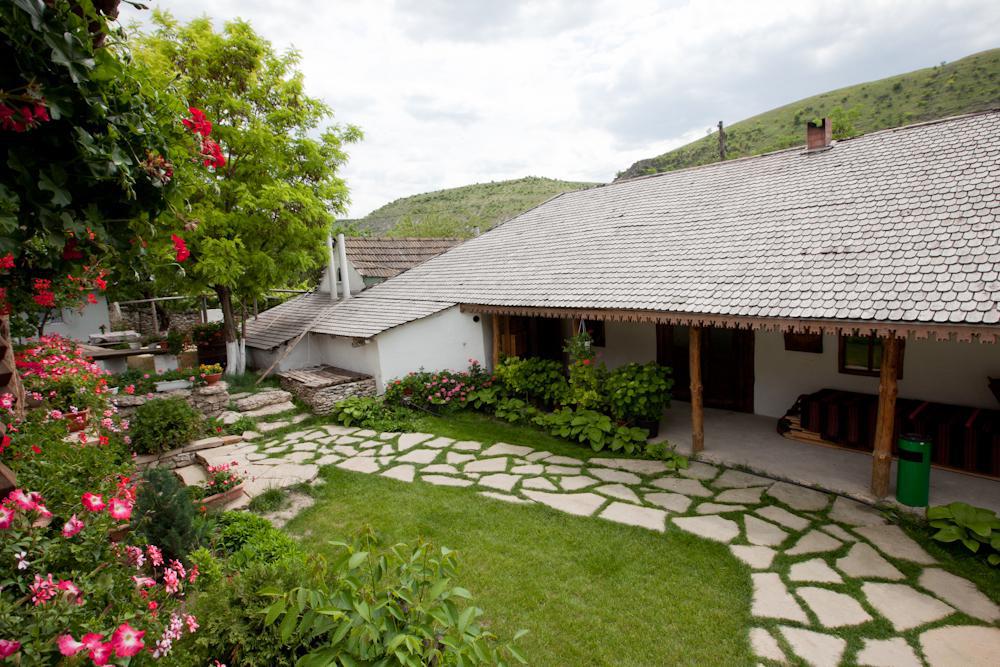
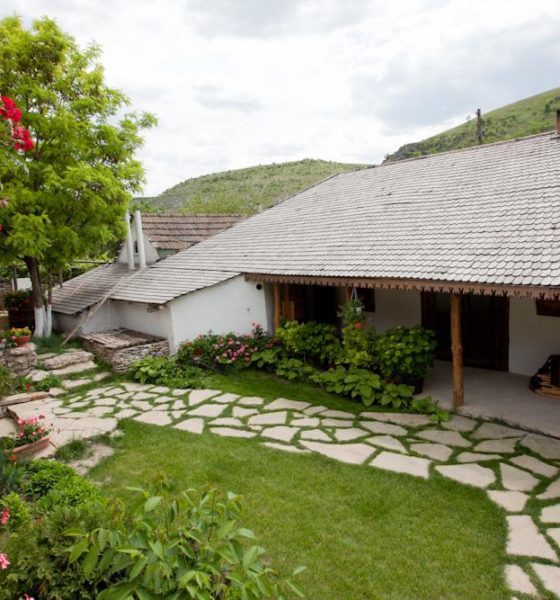
Tourism
Six countryside guesthouses from Moldova that are worth visiting
Rural tourism is very popular nowadays. It is practised even in such small countries as Moldova, where one can travel and stay in a traditional style guesthouse or inn. They usually offer accommodation services, restaurants, spa, swimming pools, rent a bike, excursions’ services, etc.
Six of countryside guesthouses from the Republic of Moldova have been certified and became a part of the common CerTour network formed of 12 countries in the Black Sea and the Mediterranean areas. Here are the guesthouses:
1. Eco Resort Butuceni
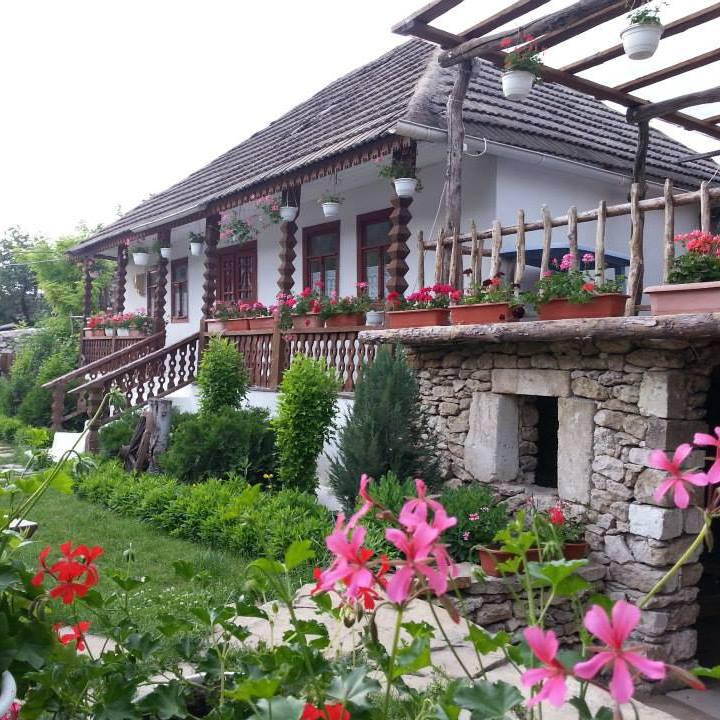
source: pensiuneabutuceni.md
The inn is located in a picturesque place in Butuceni village, being classified as a 3-star guesthouse. The interior and exterior decoration of the buildings is adapted to the rustic style. In 2004, first houses were purchased, which were restored, refurbished and opened for accommodation in 2007. Nowadays, there is also a spa centre, a craft centre, conference rooms, swimming pools, a pond for fishing and a concert space.
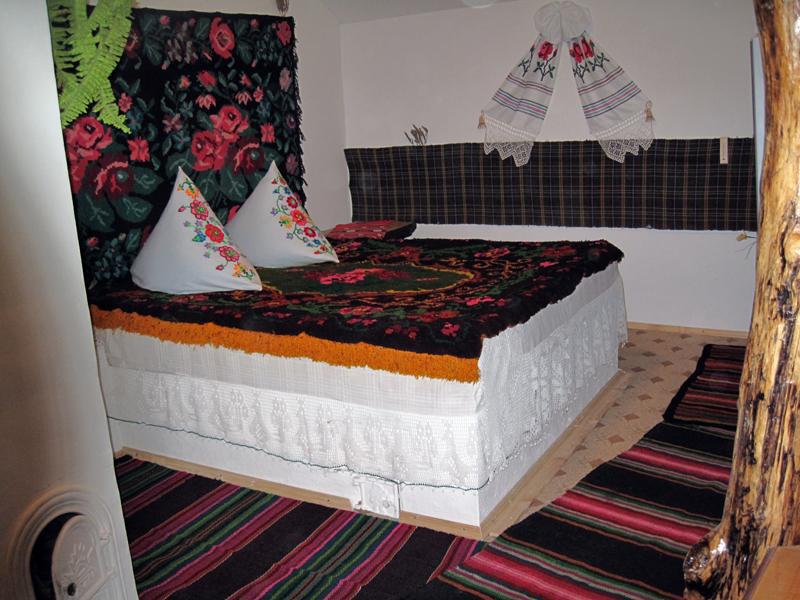
source: pensiuneabutuceni.md
The houses have specific architectural elements of the Old Orhei ethnographic area. Thus, some houses contain local elements of decoration, local crafts, furniture, fabrics and everyday items with a great cultural value. The natural drinks and local dishes are served in clay dishes, being prepared using natural ingredients from old traditional recipes.
2. Casa din Luncă
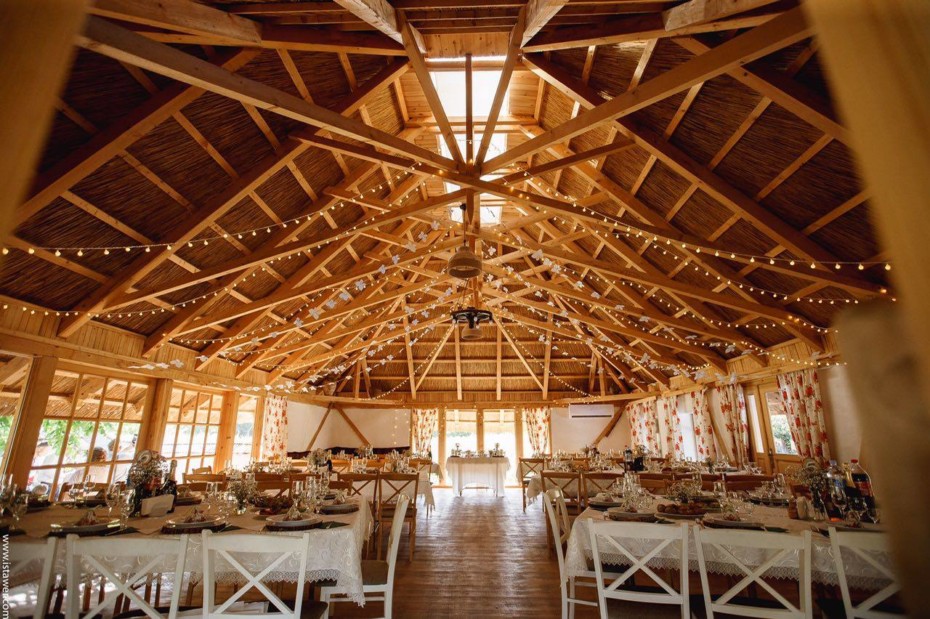
source: casadinlunca.com
The guesthouse was built by the Benzing family in May 2002, in the village of Trebujeni near Old Orhei. It was the first guesthouse of its kind in the Republic of Moldova.
It is classified, according to national standards, as a 3-star guesthouse and consists of two courtyard houses. The area in the yards includes three pavilions, a playground, swings, a swimming pool and a Russian sauna.
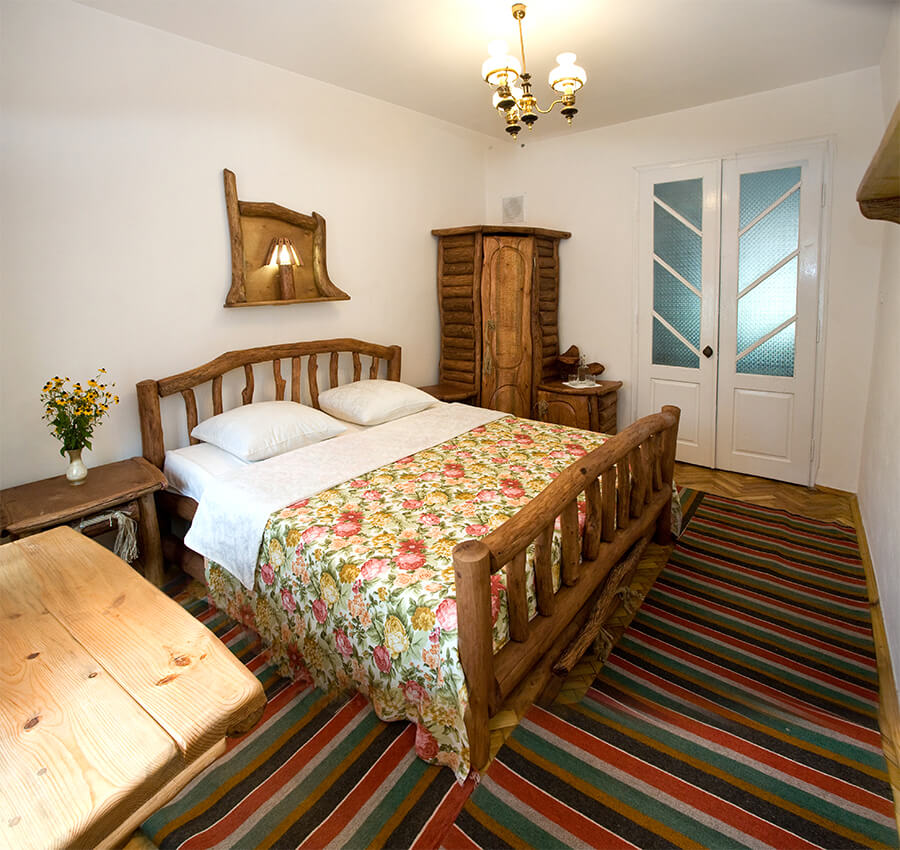
source: casadinlunca.com
The guesthouse is an ecological residence, choosing to reduce all types of pollution (chemical, biological, visual, olfactory or sound ones). The efficient use of energy resources is a priority for the staff and clients. Hot water is obtained by using batteries to accumulate solar energy. The heating of the rooms is ensured by the heating system with wood and biomass. The illumination of the territory is mainly done with solar lamps. The guesthouse has an ecological container for the collection of household waste, located in a specially designed space. There is also an autonomous system for capturing and evacuating rainwater.
3. Casa Verde
One of the pioneers in the field of rural tourism was the guest house “Casa Verde” built in 2001. It is a complex of 3 traditional houses where such traditions as painting Easter eggs is preserved and promoted. This craft is practised by several women from Trebujeni.
The guest house also includes a restaurant where a wide range of fresh, traditional, authentic food can be served or even prepared by visitors, along with non-alcoholic beverages (fresh compote, juices, herbal tea), as well as alcoholic beverages (homemade wines, brandy, sour cherries liquor).
4. Vila Roz
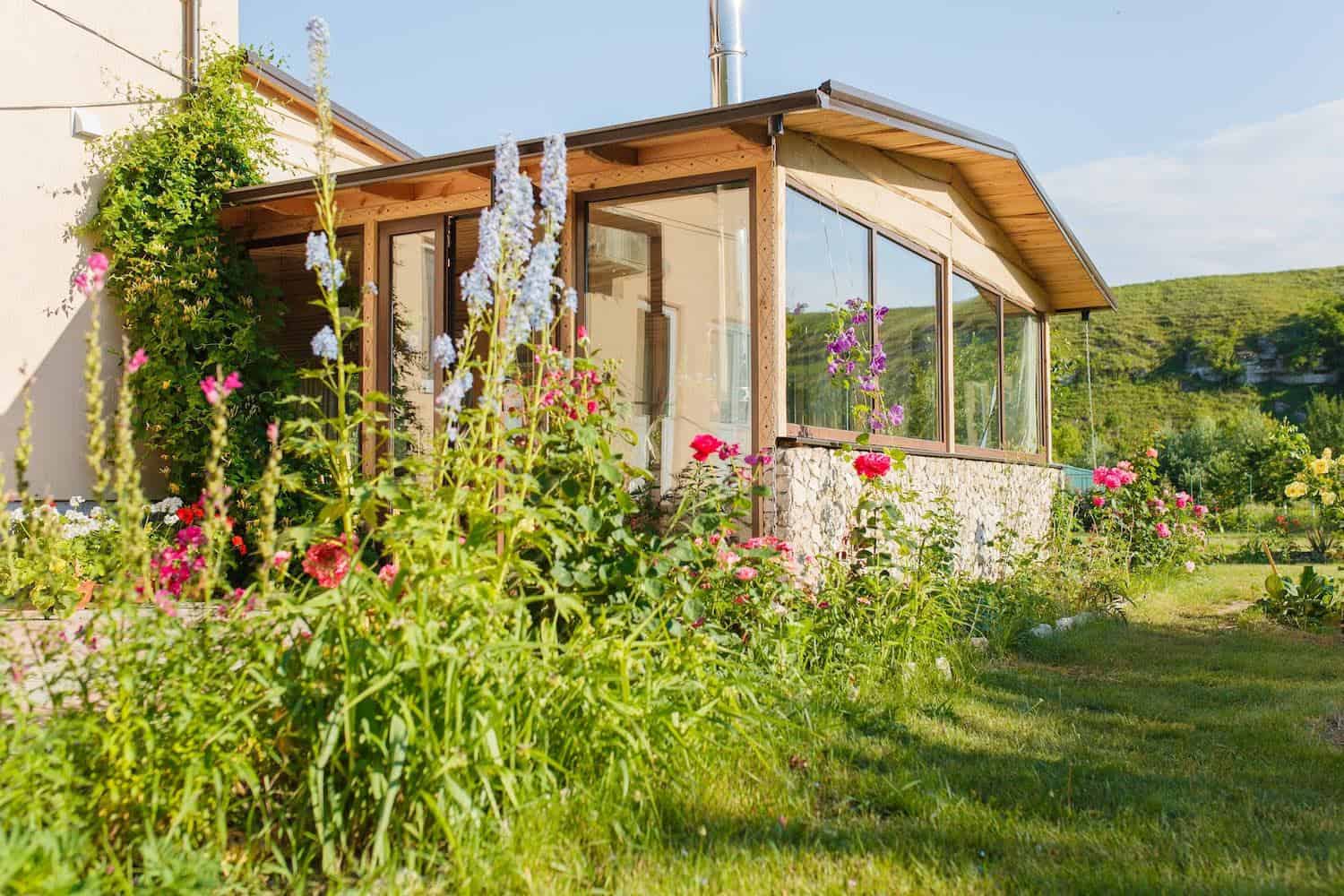
source: vilaroz.com
The countryside guest house was opened in 2011, in Trebujeni, after the reconstruction of the owner’s parent house. The guesthouses’s doors are open all year long, offering accommodation services in two buildings. The terrace is decorated with Moldovan carpets, table covers and other decor elements made by local craftsmen.
The guest house’s kitchen is specialised in traditional dishes, prepared from vegetables grown in the own garden and bought from local farmers. The most famous local dishes are the biscuits in the form of roses and the home-made roses jam.
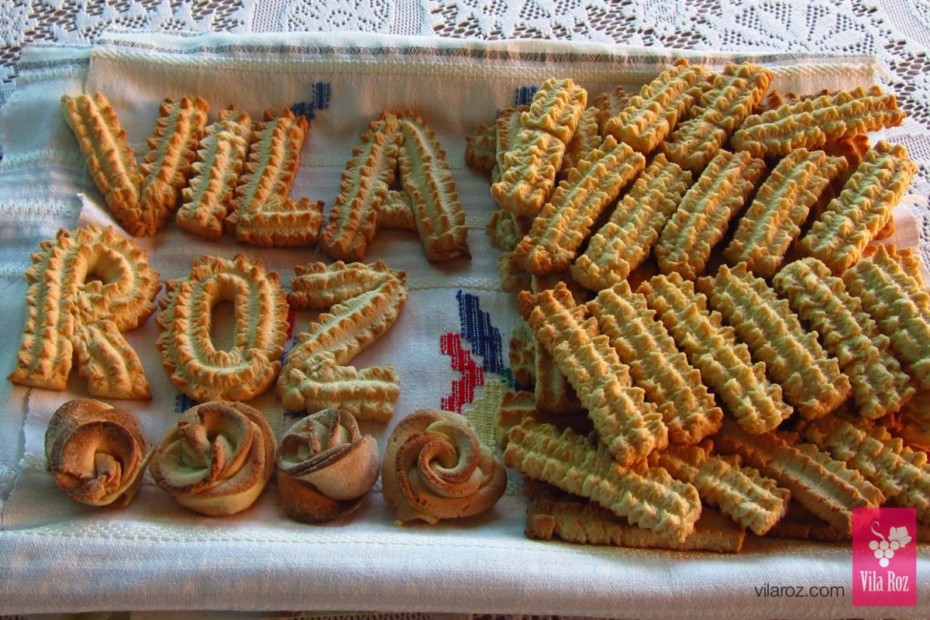
source: vilaroz.com
5. Fata Morgana

source: fatamorgana.md
The inn is located in Molovata village, Dubasari district. It was opened for visitors in 2012 and accommodates them during the warm season of the year, as well as during the winter holidays. It was designed and built in accordance with local architectural traditions, using traditional materials: stone, wood, clay and reed.
The complex is formed of a big house and small bungalows for relaxation and fishing, as well as a summer terrace and the wine cellar that are decorated with traditional elements such as clay pots, traditional towels, wagon wheels, etc.
The menu of the local restaurant includes traditional dishes like crabs boiled in butter, accompanied by homemade wine and cvas.
6. Hanul lui Hanganu
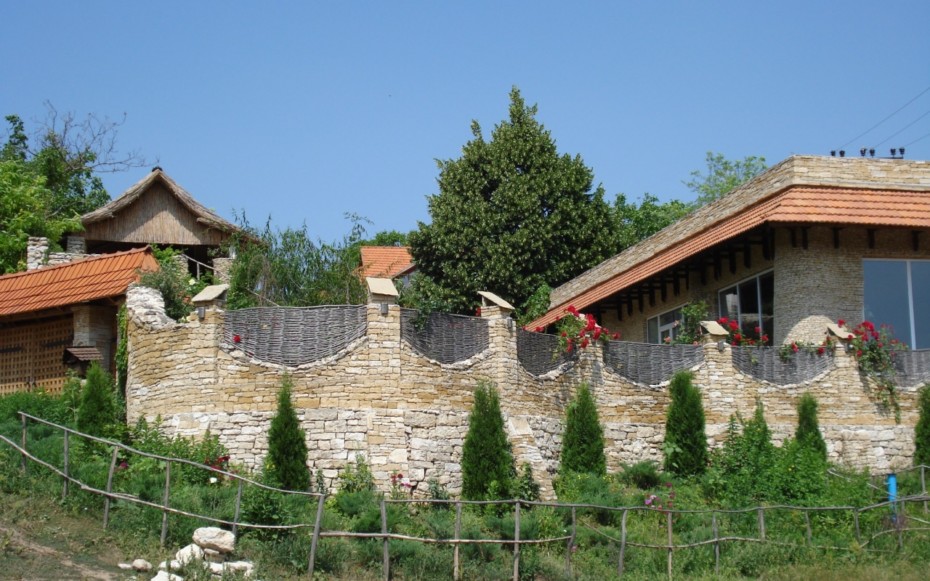
source: hanulhanganu.md
The guesthouse is located in Lalova, Rezina district. It started its activity in 2006, offering, at that time, accommodation services in two rooms, meal and leisure. Now it represents a set of rooms built in rustic style: walls of clay, roof covered with ceramic tiles, furniture made of natural wood and woollen carpets.
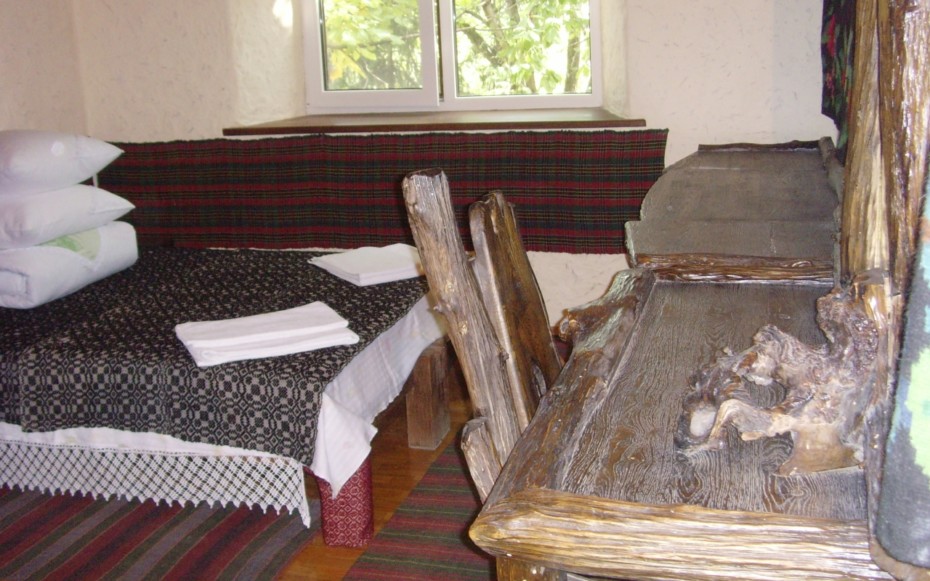
source: hanulhanganu.md
The general objective of the CerTour project is to promote rural tourism in the partner regions and to improve the quality of the offered services by introducing a common quality standard and a certification process. The guesthouses receive certification for a number of criteria: proximity to cities, security, traditional products for sale, sustainable use of natural resources, minimal impact on the environment and others.
Information source: the catalogue of certified guesthouses in the Republic of Moldova
This text is a translation. The original article can be found here.
Photo: pensiuneabutuceni.md
Culture
The village of the first astronomer in the Republic of Moldova

Culture
Vîșcăuți, the Moldovan village where you feel like heaven
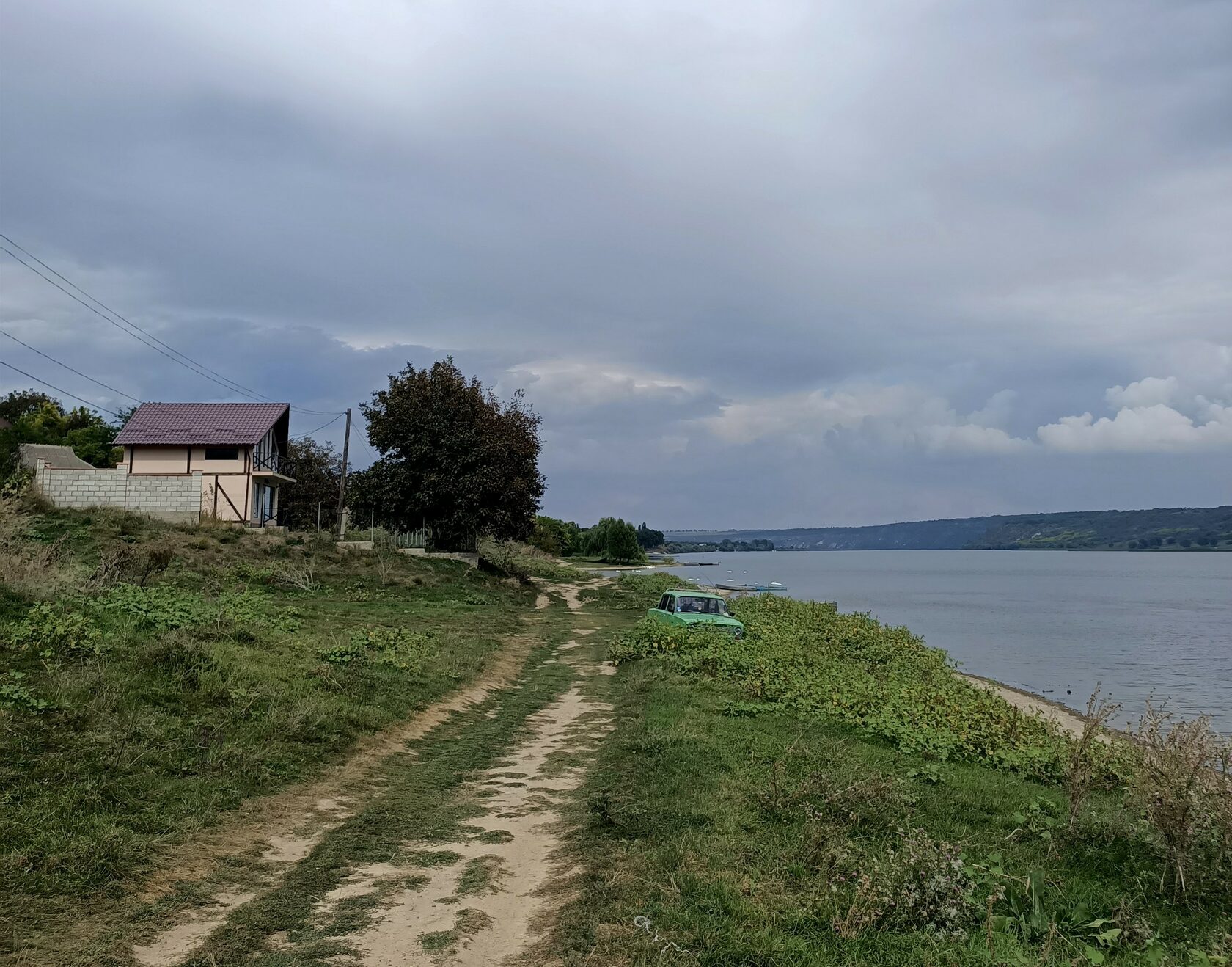
Reading Time: 9 minutesShe enters the house in a hurry and arranges the corner of the entrance mat. She leaves her purse and other items on the kitchen chair and starts washing the dishes. Then she goes to the second floor, changes the sheets on the beds, arranges the trinkets on the table, draws the curtains and opens the windows to aerate the room. From the window you can see the Nistru river, its banks covered with fresh vegetation. The woman sees to her tasks. She vacuums, she cleans the floors and starts all over again on the first floor.
Then she moves to the old house next door. Nobody was accommodated in this house yet, as everyone prefers “euro” repairs, as Lucia, the 52 years old administrator of the guest house, explains. But she doesn’t let the dust settle on the furniture and always has the rooms ready to accommodate guests.
The House of the Boyar is a guest house in the village of Vîșcăuți, Orhei, and can accommodate up to 8 persons. It is part of an eco-cultural touristic project “Bronze Half-moon” (“Semiluna de bronz”), which aims at attracting tourists in rural regions, offering them authentic experience, but it also promotes social entrepreneurship.
Besides involving the locals by creating jobs, the project also offers the opportunity and necessary support for the villagers to sell their products and services. Also, the profit is reinvested in the locality and its development. For example, now they work on developing a touristic trail through the forests of Vîșcăuți with all the necessary infrastructure, which will benefit the visitors of the village, as well as the locals.

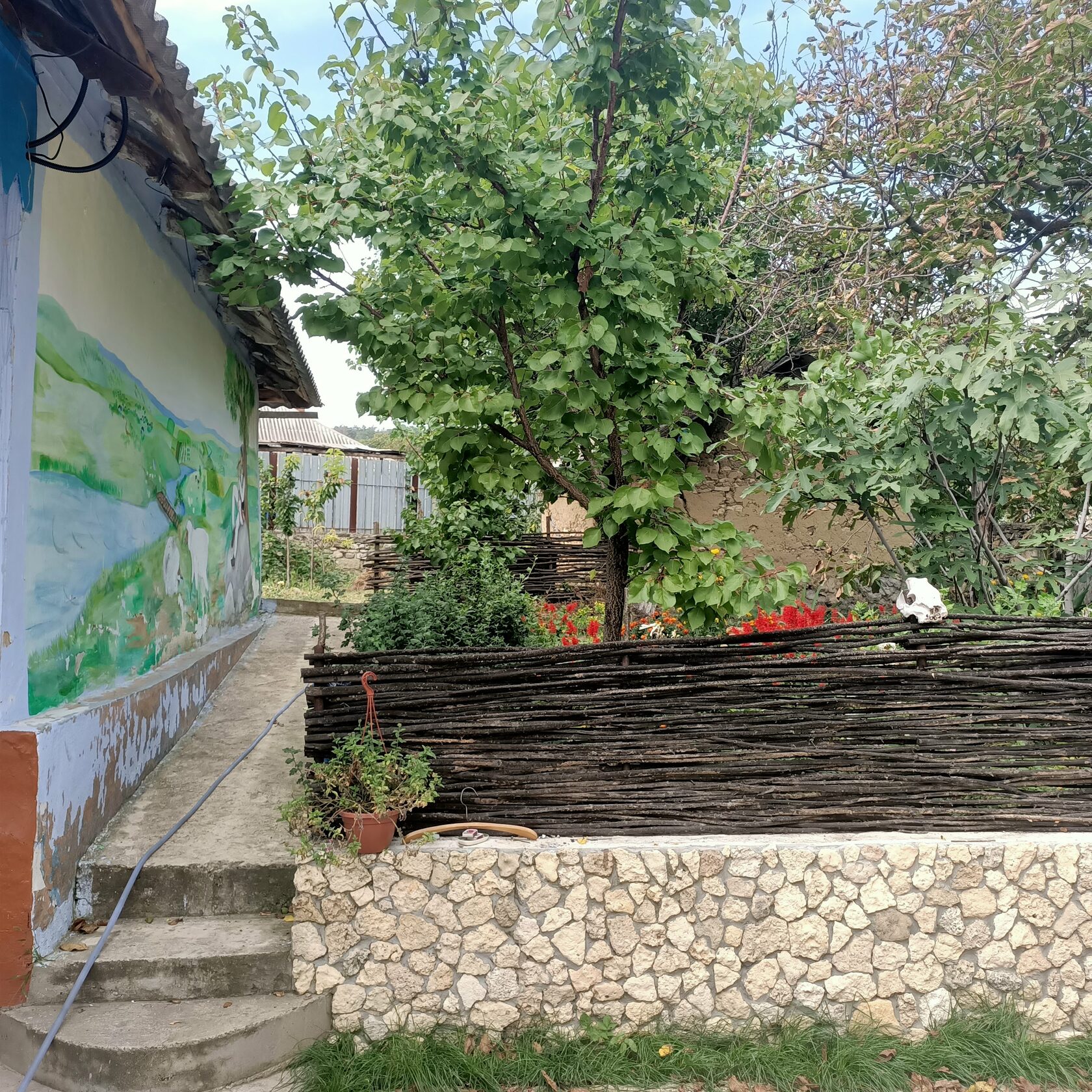
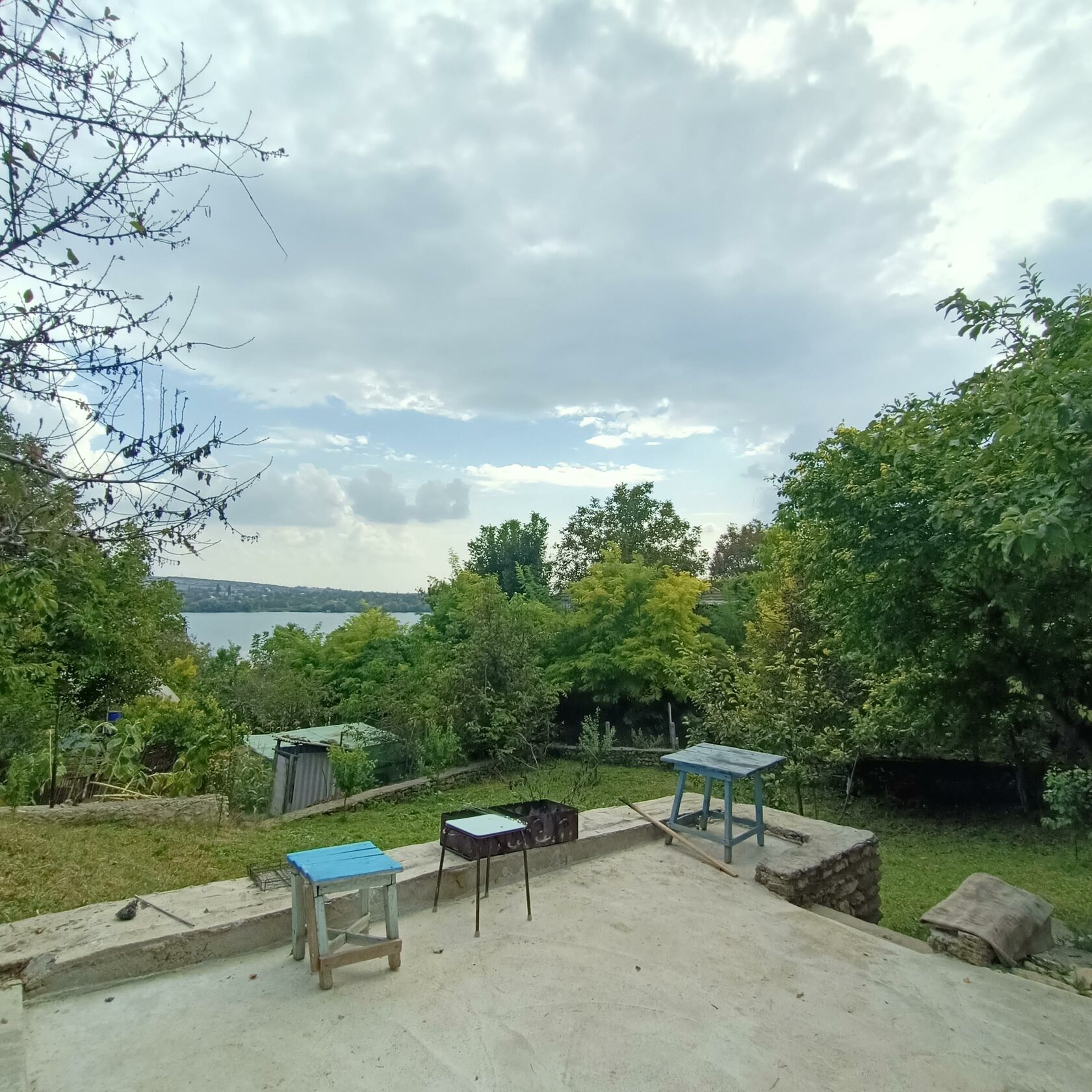
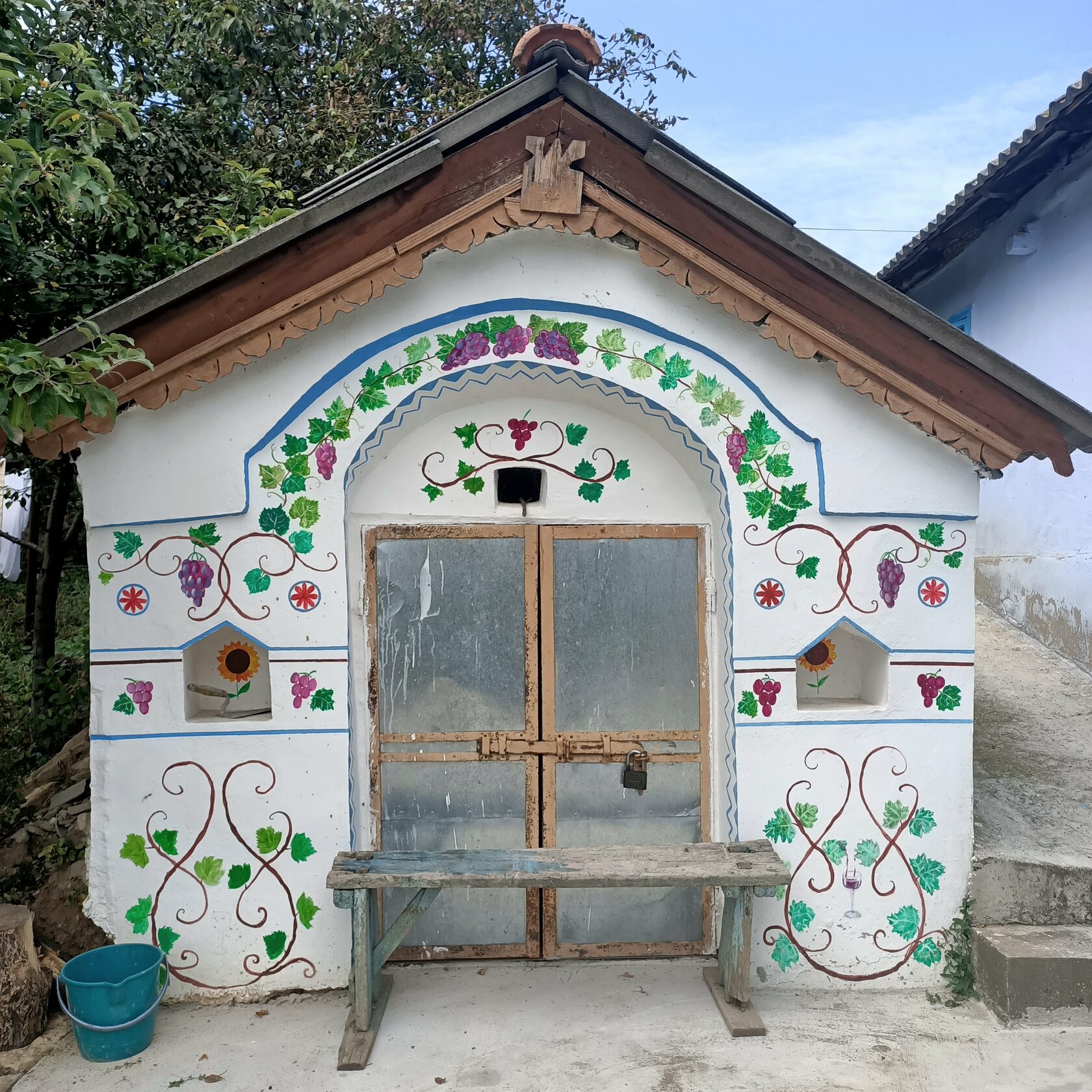
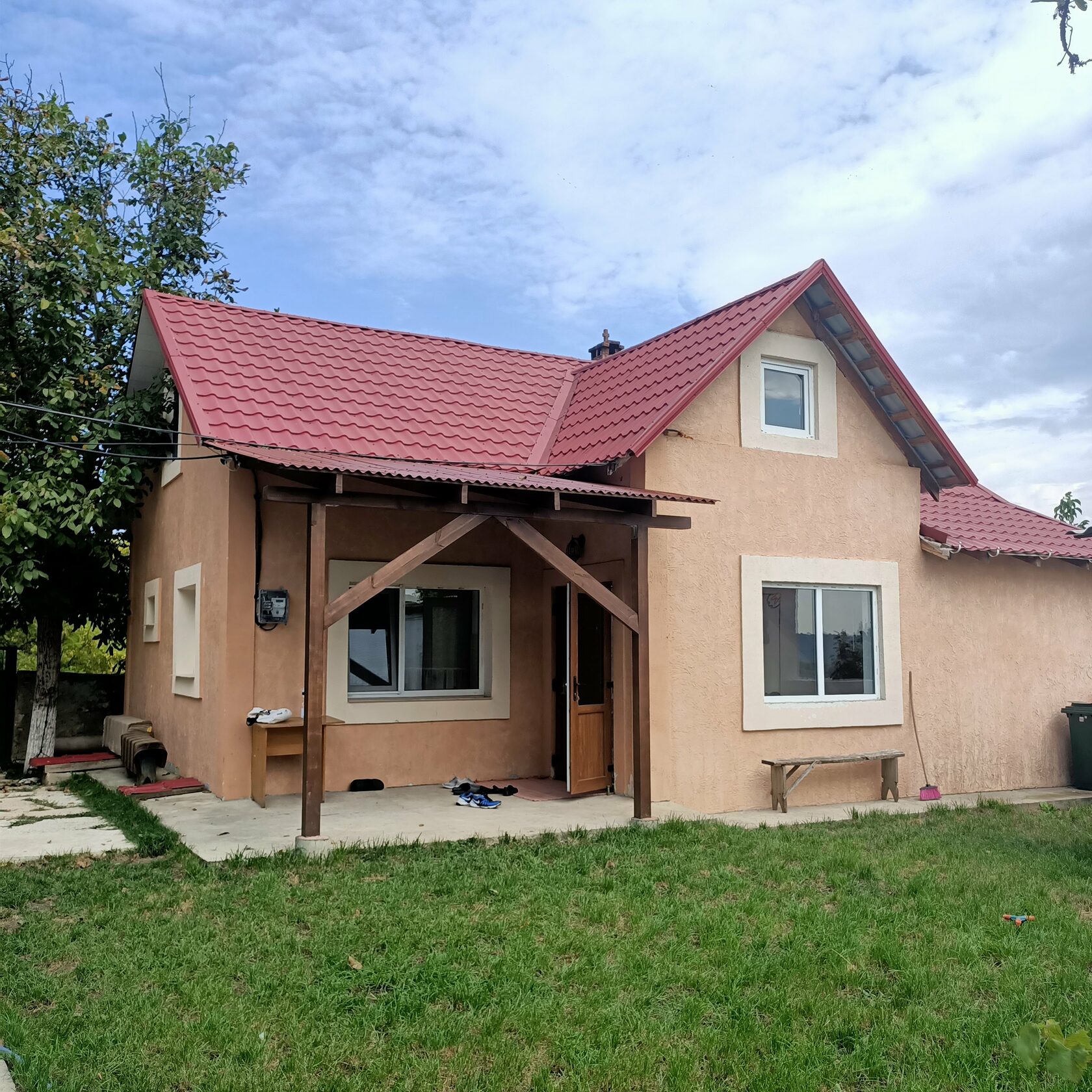

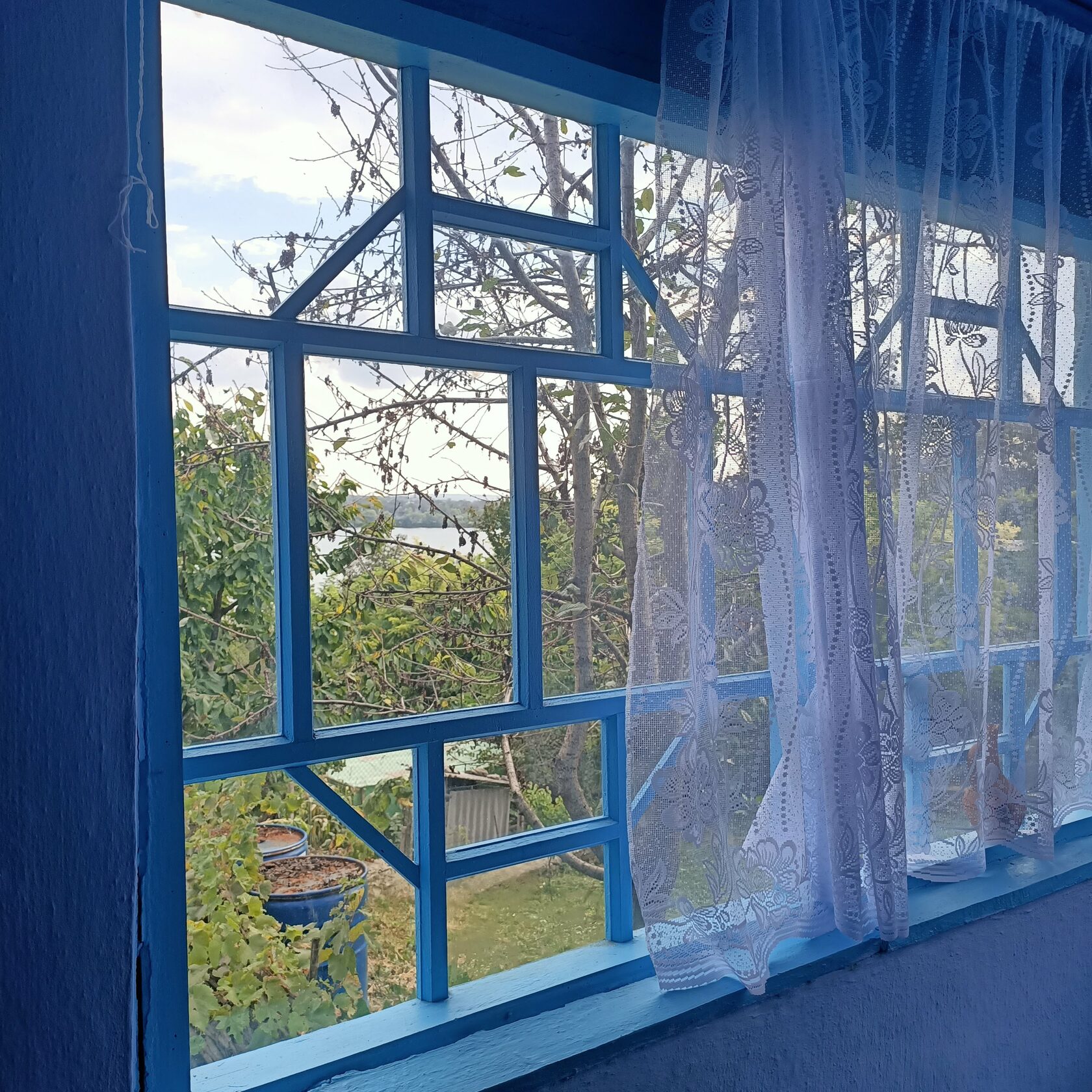
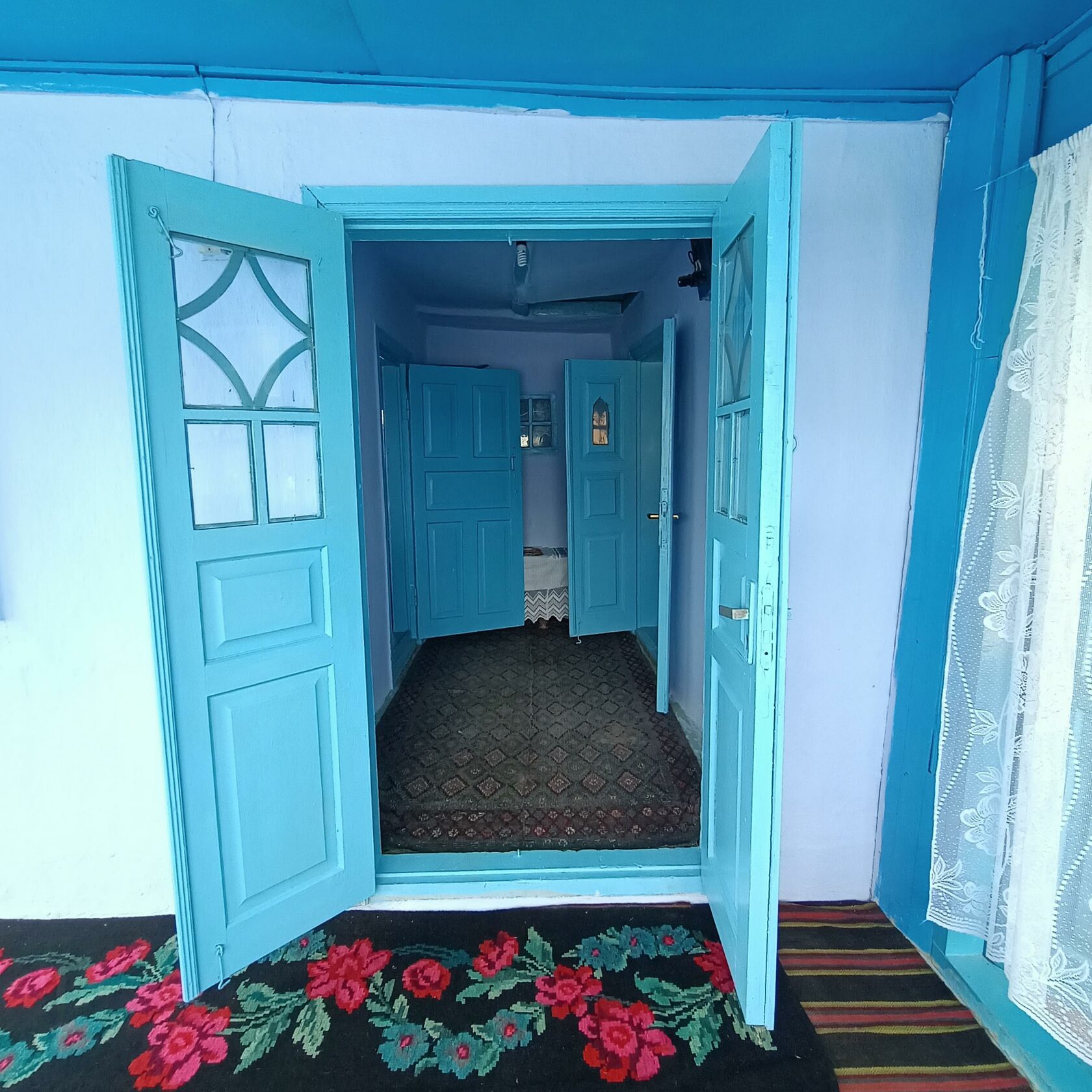
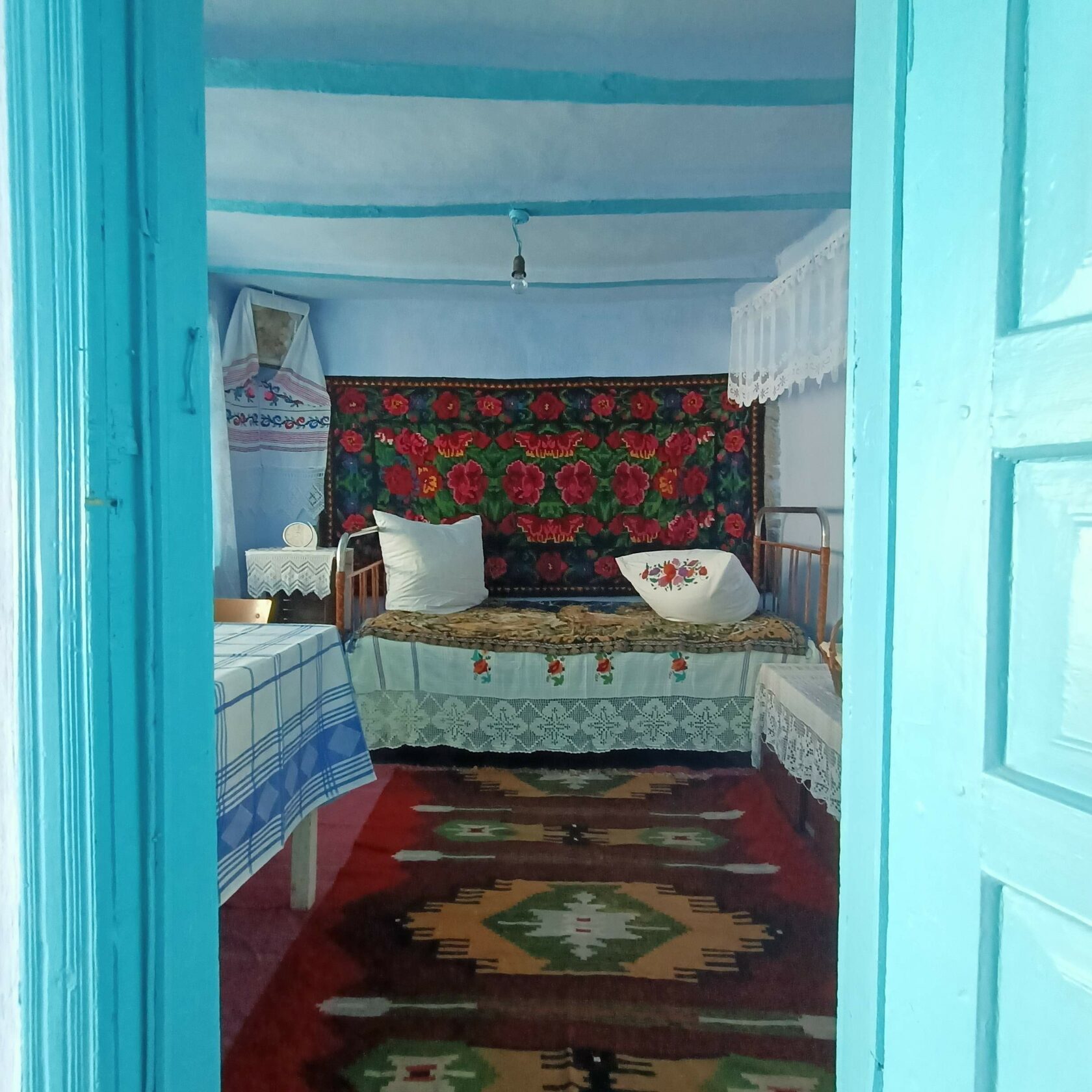
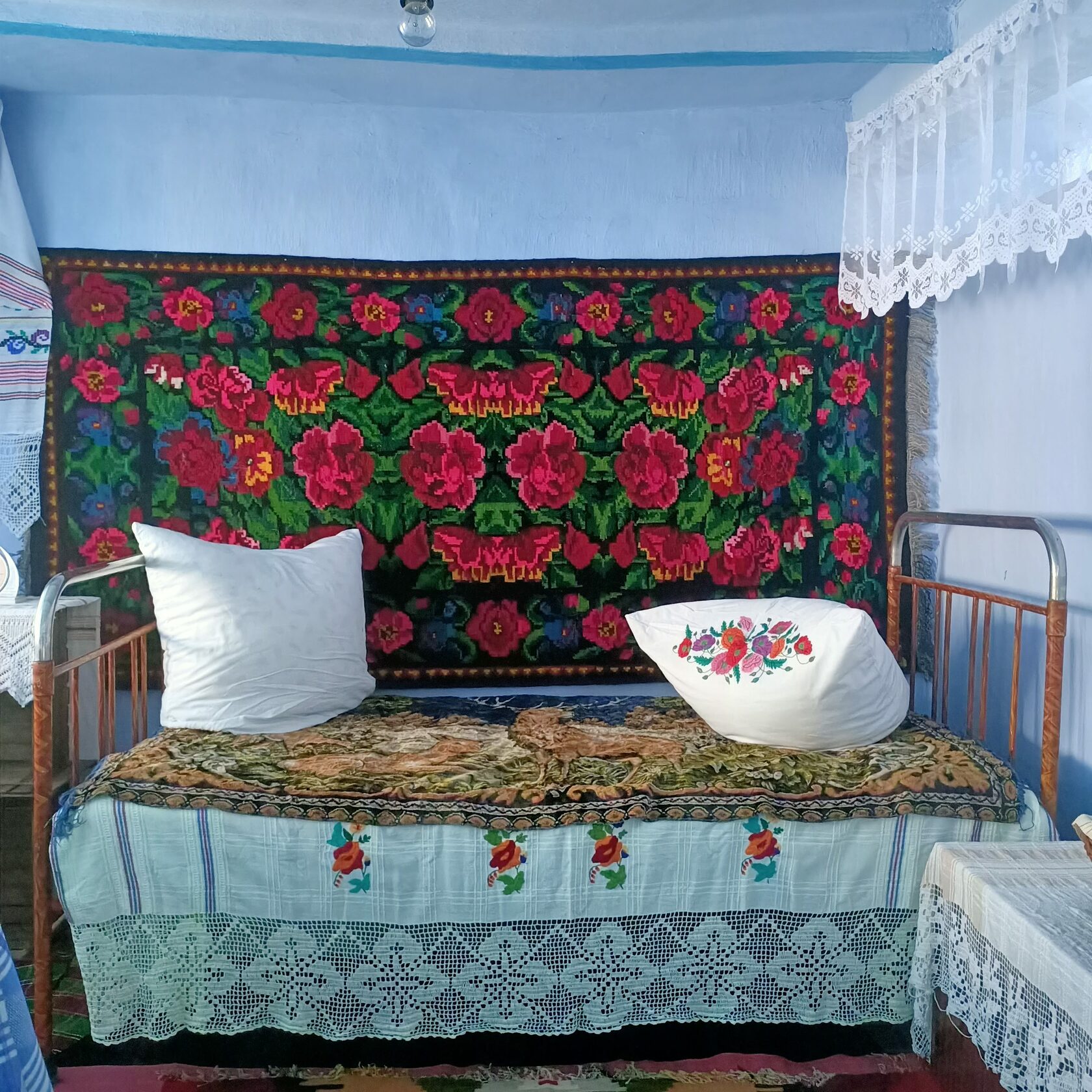
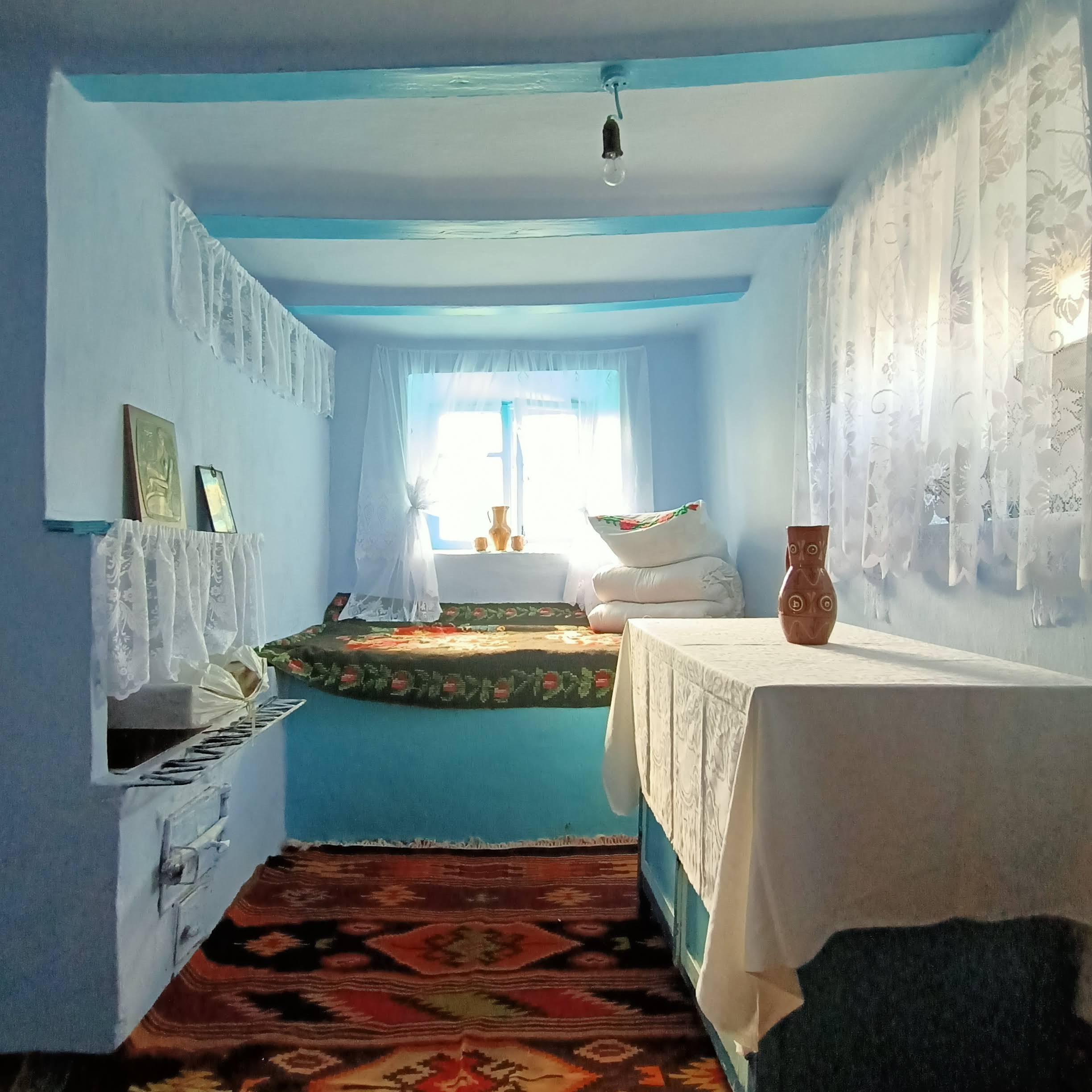
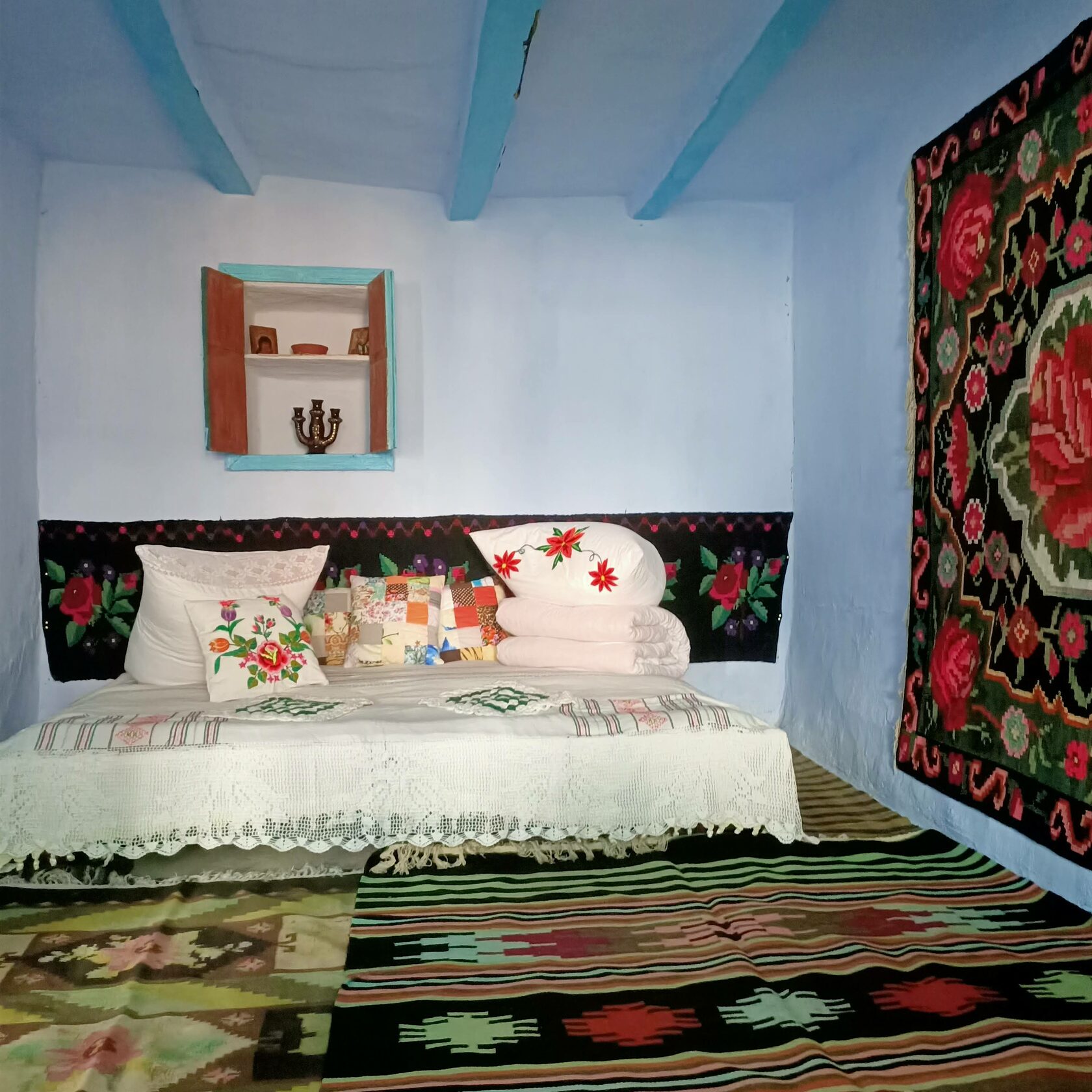
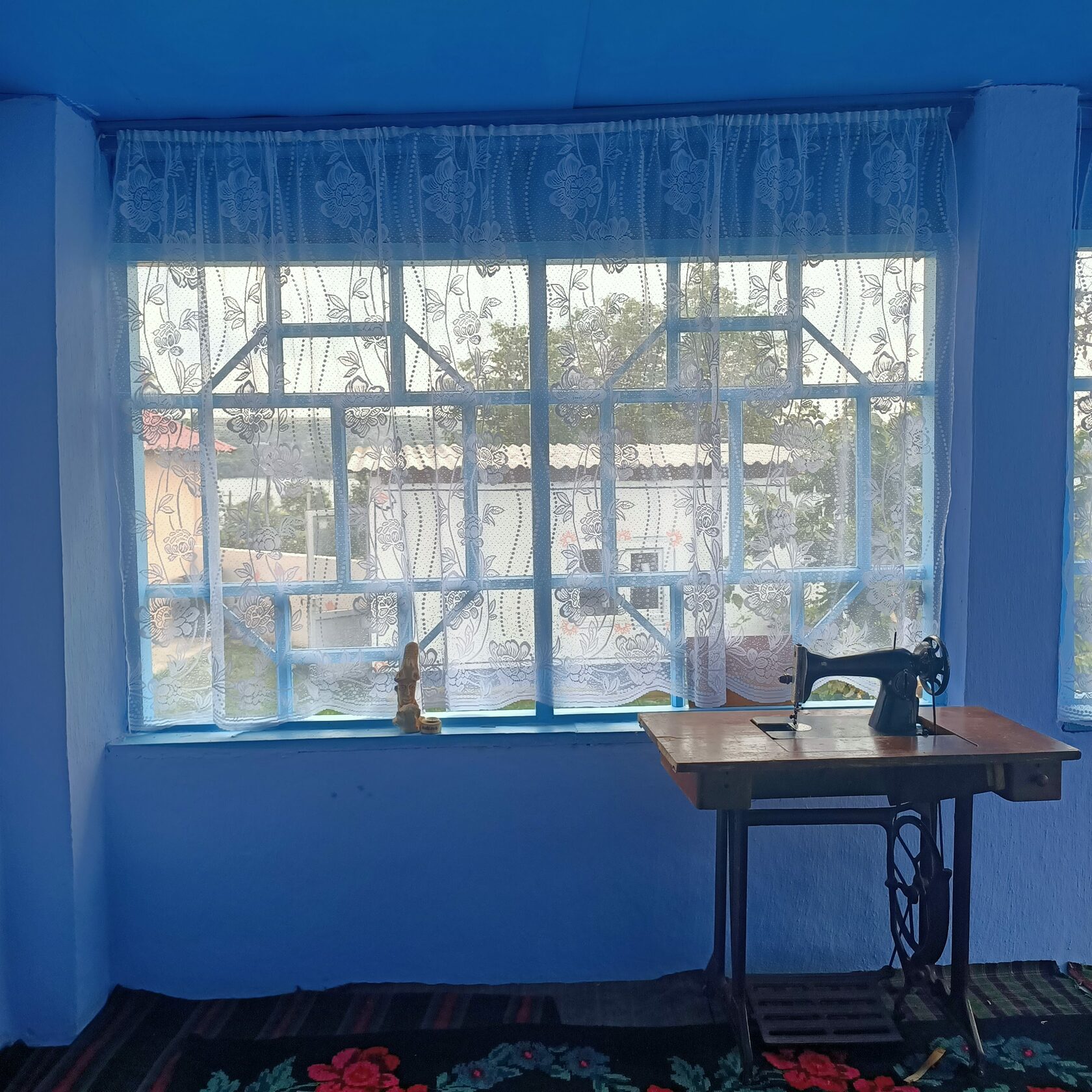
Lucia quickly sweeps in the yard and takes out the trash. She managed to tidy up in just about two hours. A group of tourists just left and another one is coming. Lucia Frunză took off her apron and is ready to welcome the guests. “They come from Chișinău, they come from everywhere,” she says in a hurry.
Lucia remembers when she received a group of 18 people. At their request, she cooked them plăcinte, pot roast and mămăligă. But she decided to make them a surprise and prepared some mulled wine. “As a bonus. I have a special recipe. I add black pepper, sugar, lemon, oranges and a little vanilla. These give the wine such an arooomaaa.”
She is a very good cook. And one of her secrets is a special knife, which she carries with her from home to the guest house and back. It’s a cleaver with a wavy pattern blade, so when she cuts produce, it has jagged edges. When she makes soup, she cuts the potatoes, the carrots, the meat and the onion – she slices everything with it. Once she brought a bowl of soup to uncle Colea. “Oh, this soup with farfalle is so good, it’s like at a restaurant!,” recalls Lucia amused about the impression she made on the neighbor.
The meadow and the cave
Gheorghe and Ludmila Frunză live down the road from the guest house. When Lucia has too much on her plate, the old couple helps her out with cooking or with laundry. He is 74 years old, and she is 70. In summertime, the couple spends their second youth in Vîșcăuți. In winter, when it’s cold, they go back to Chișinău.
Gheorghe was born here, and he knows all the surroundings like his five fingers. He knows how to reach the Boyar’s Cave two ways: one is more difficult and the other one easier.
If you are in good shape and have the courage, you can reach the Boyar’s Cave through the ravine. But Gheorghe’s legs can’t keep up with this trail as he used to. The pathway to the cave goes between two rocky hills. You will step on the slippery rocks, washed by the cold water of the springs. You will climb the trees so thick, you can’t embrace with both hands, knocked down by the summer rain.
You will slowly advance towards the cave located up the hill, where you’ll see the Cornelian cherry dogwood full of hard-to-reach red berries, which local people pick for making compote. If you try and yell between the two rocky hills, your voice will not travel far. You will have no use of modern technologies, and your phone will only be good for taking pictures. Here you can breathe fresh cold air, while embraced by the silence dictated only by the murmur of the water.
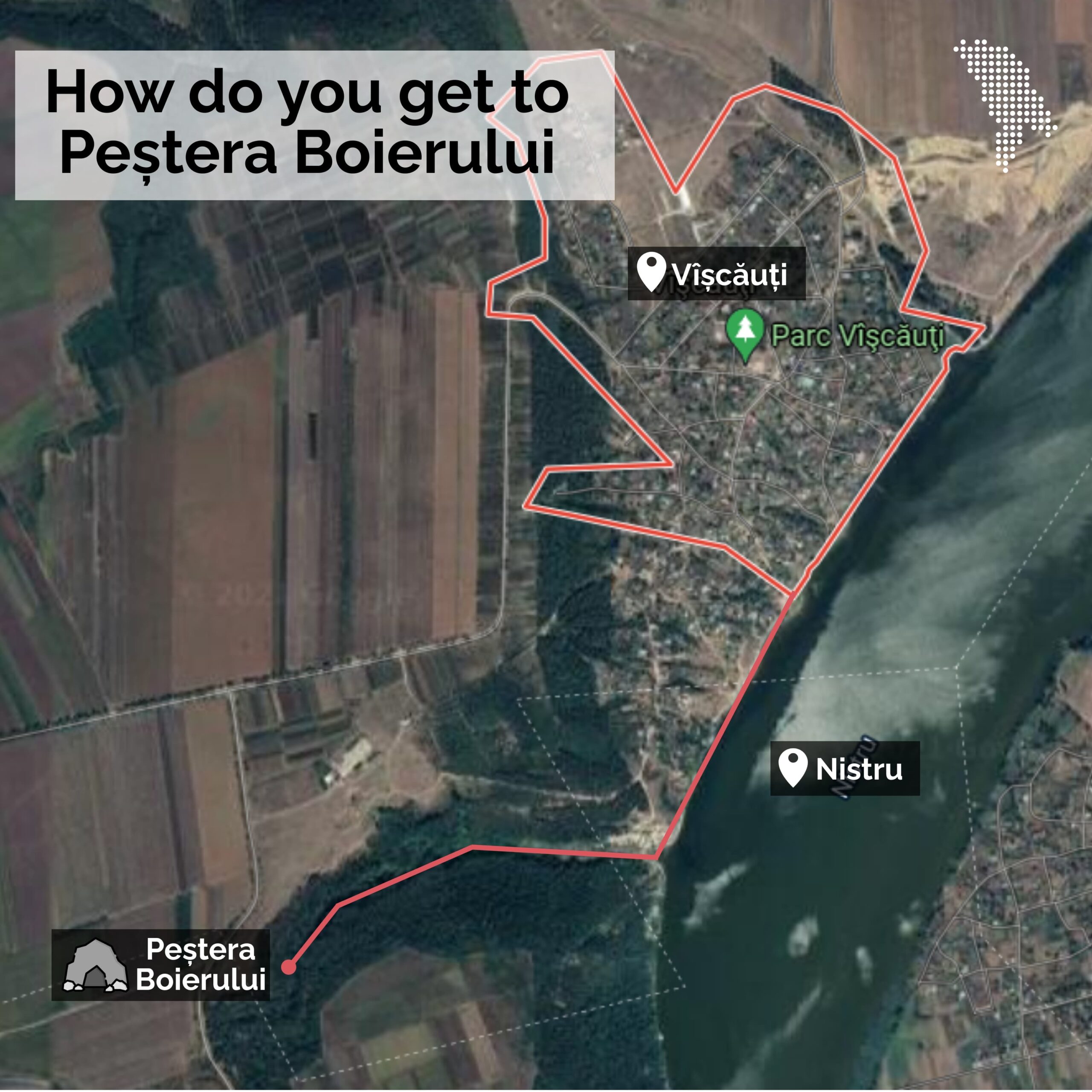
Once you reach the cave, you need a lantern. On the walls you can see “V+M=LOVE”, but also hanging bats – almost embraced one next to another. There are three entrances to the cave and many labyrinths. No one knows exactly what are its measurements. There are some assumptions that it’s one kilometer long. But you can’t really reach its depths, because it collapsed a long time ago.
There are many legends about the origin of the cave. Gheorghe tells us that it used to be a quarry, tons of rock being extracted for the construction of churches.
Actually, according to archives, the cave was dug by the Sandino boyar around 1900 for storing wine barrels.
Locals say that during the two world wars, the cave was used as shelter for their grandparents and great-grandparents, and that they were guarded by the soldiers stationed in Vîșcăuți.


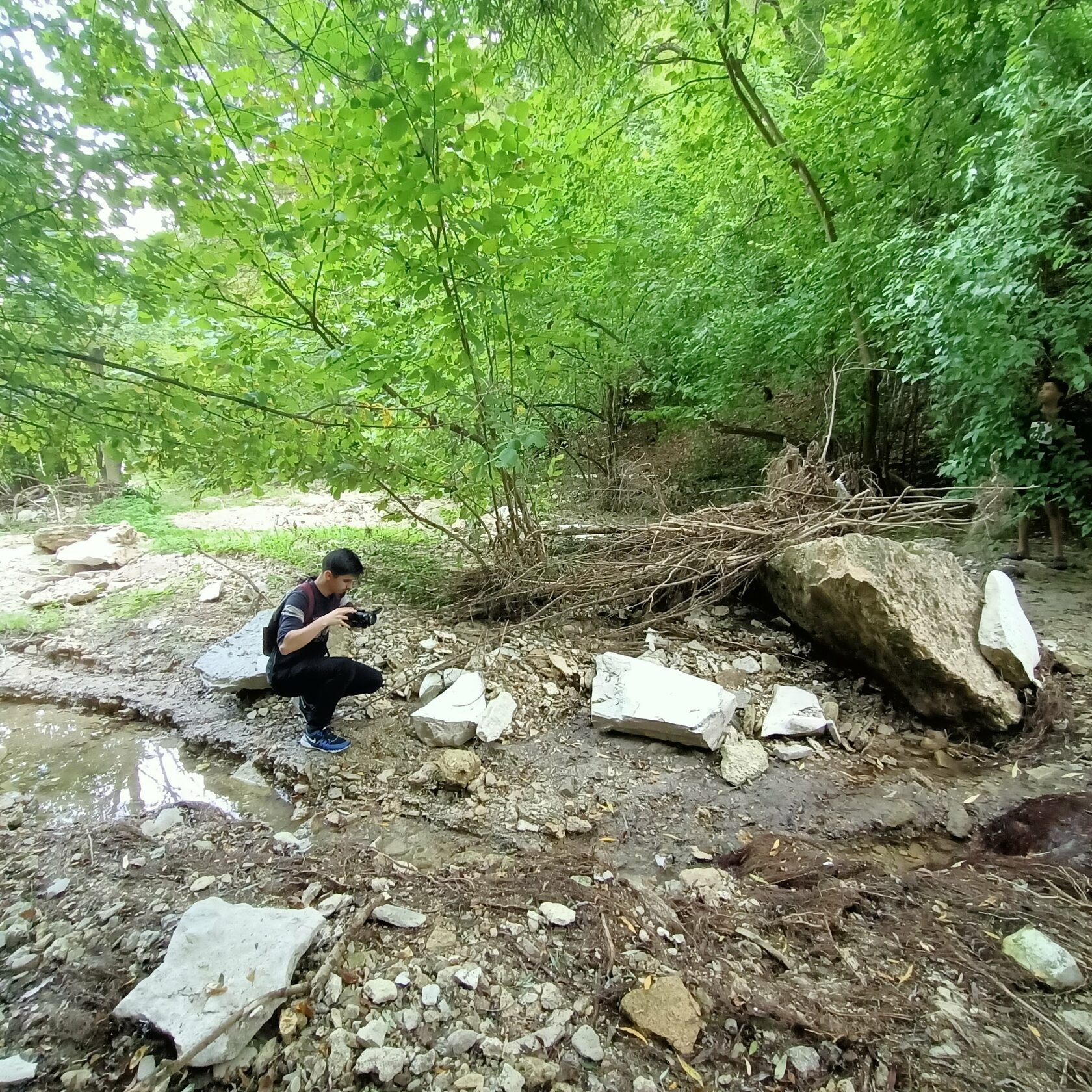
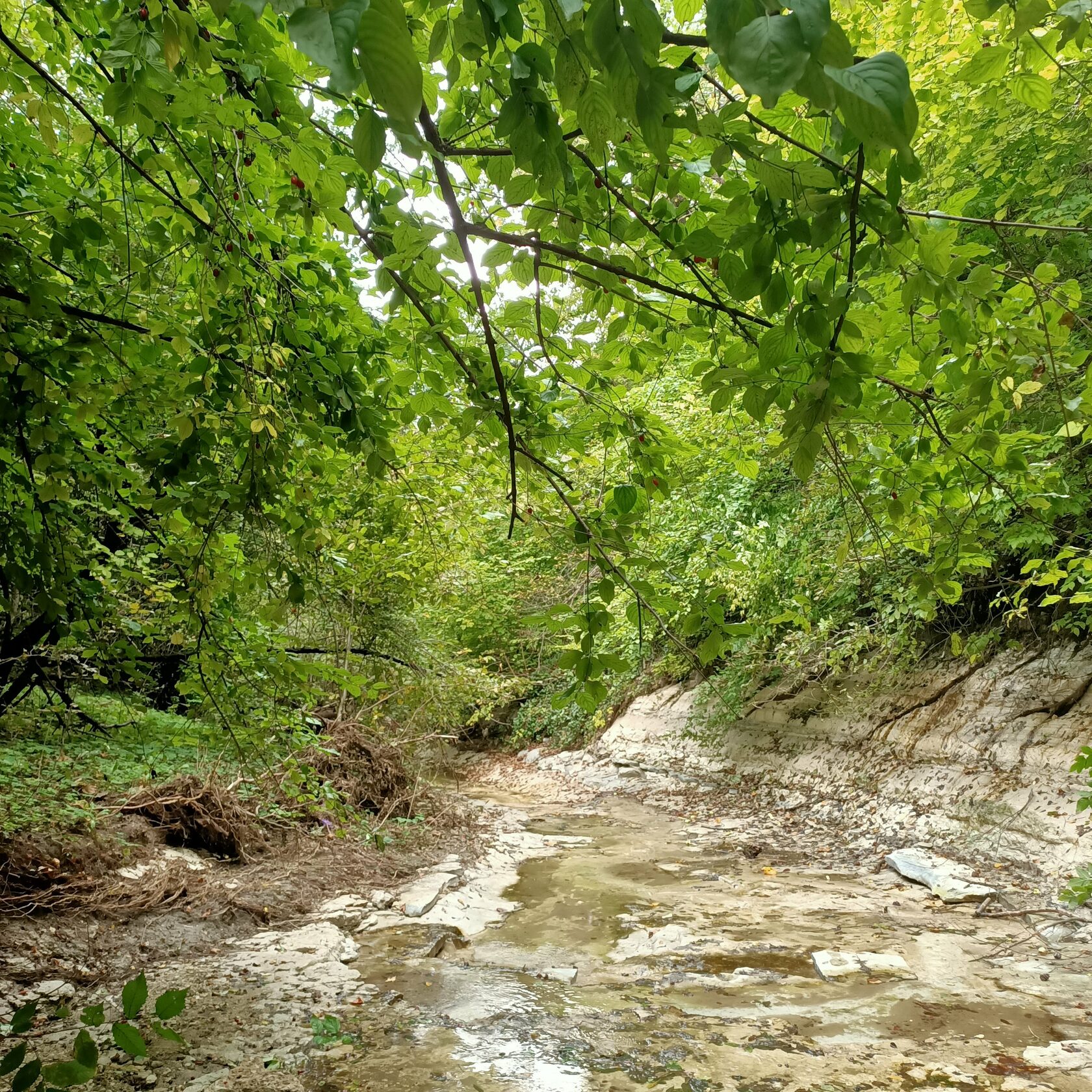
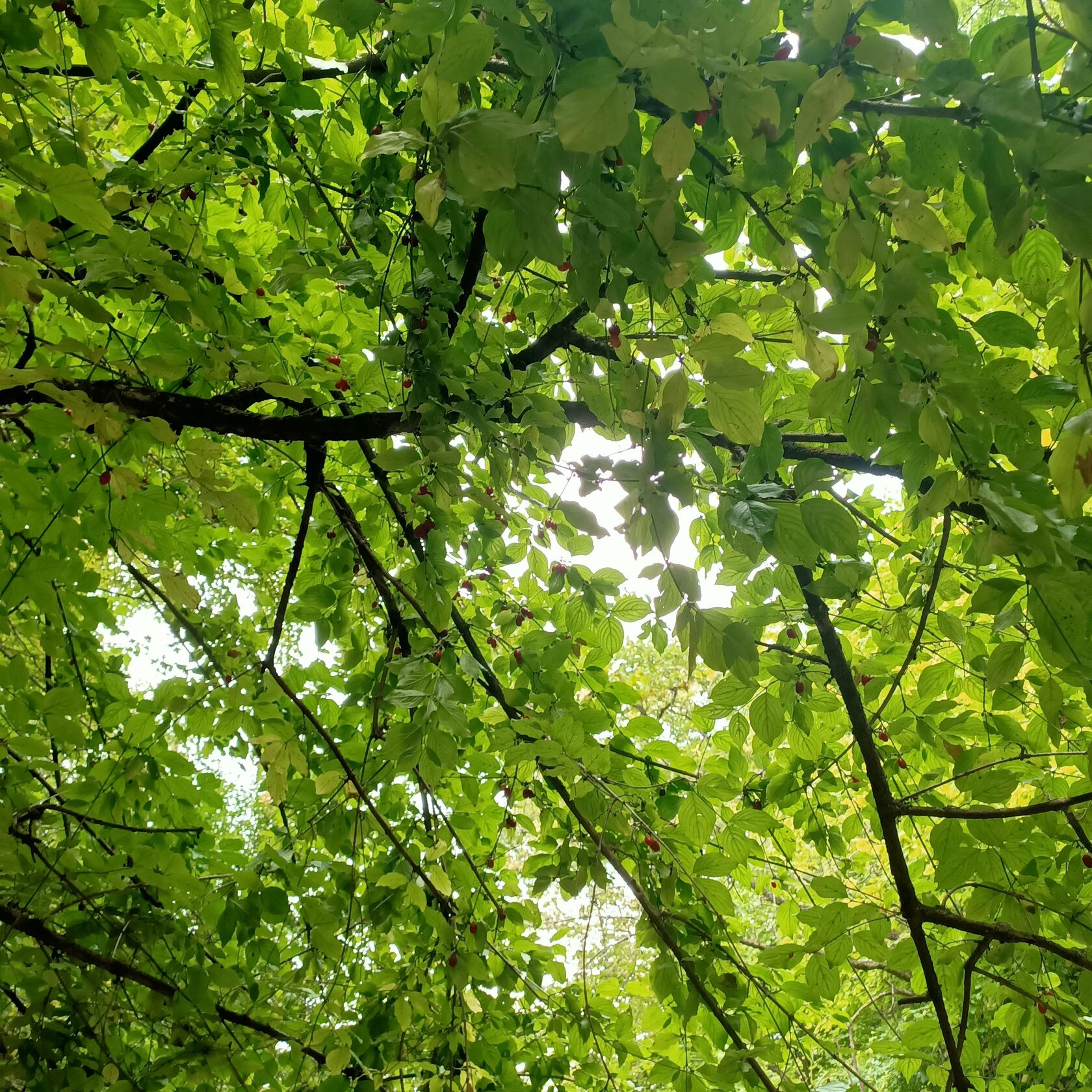
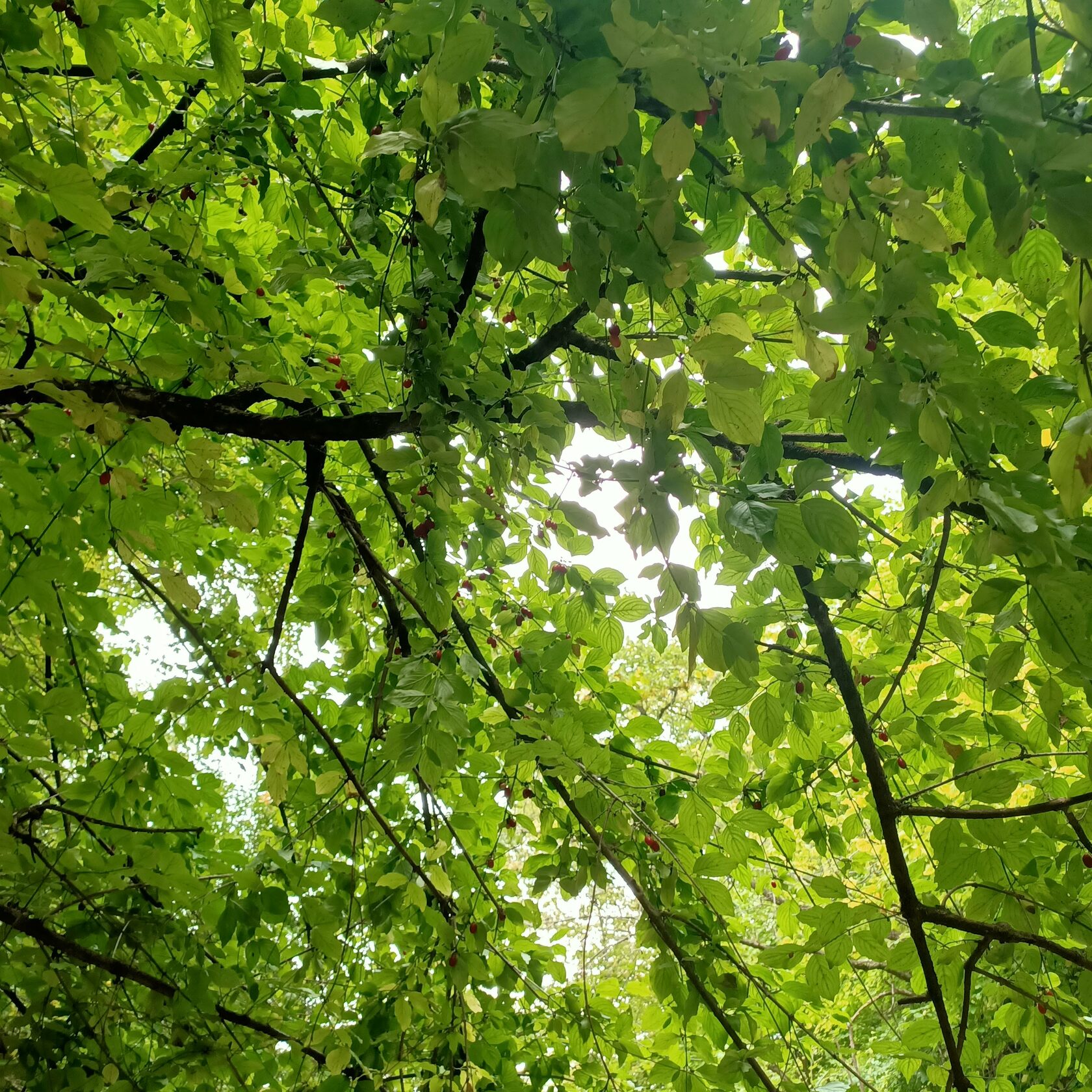
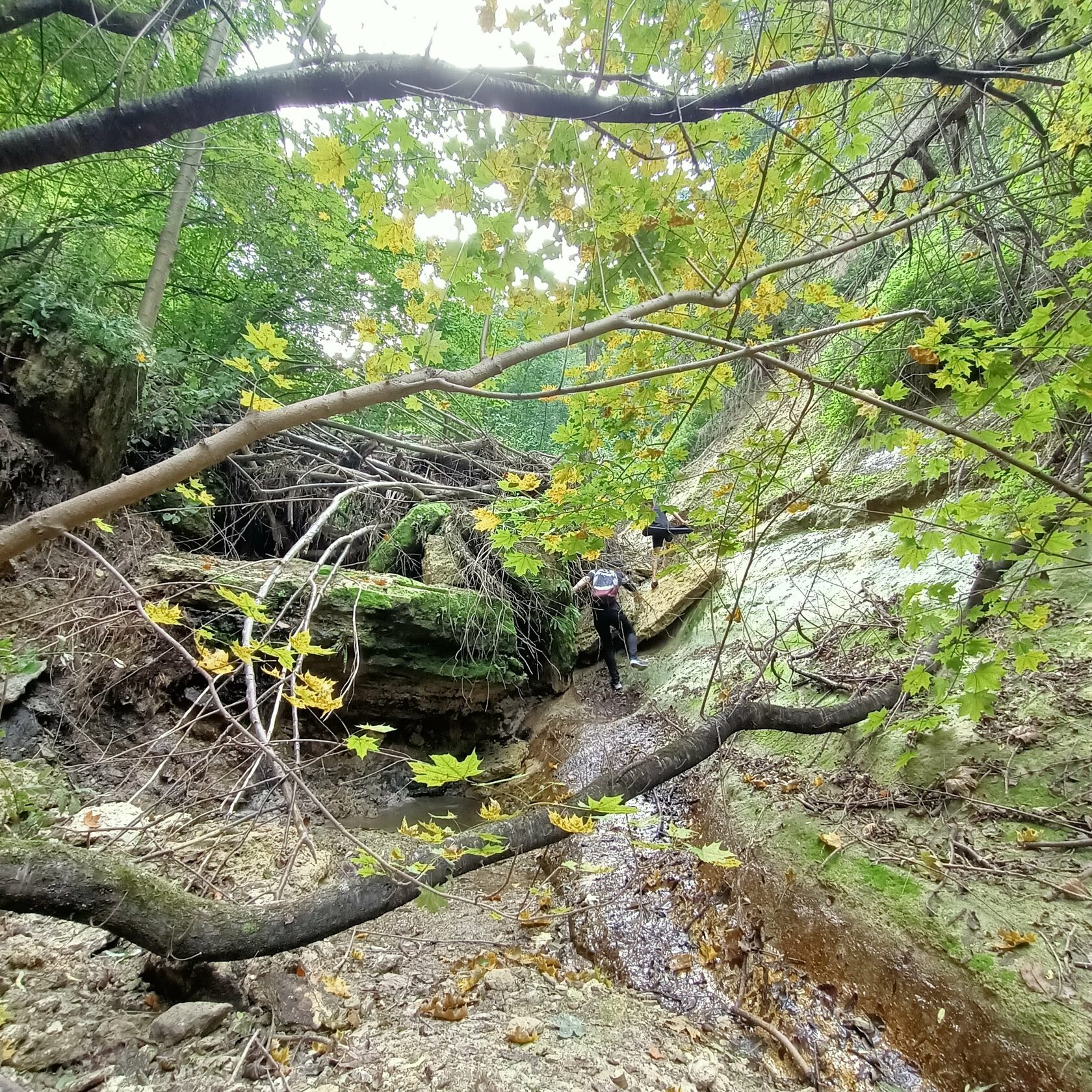
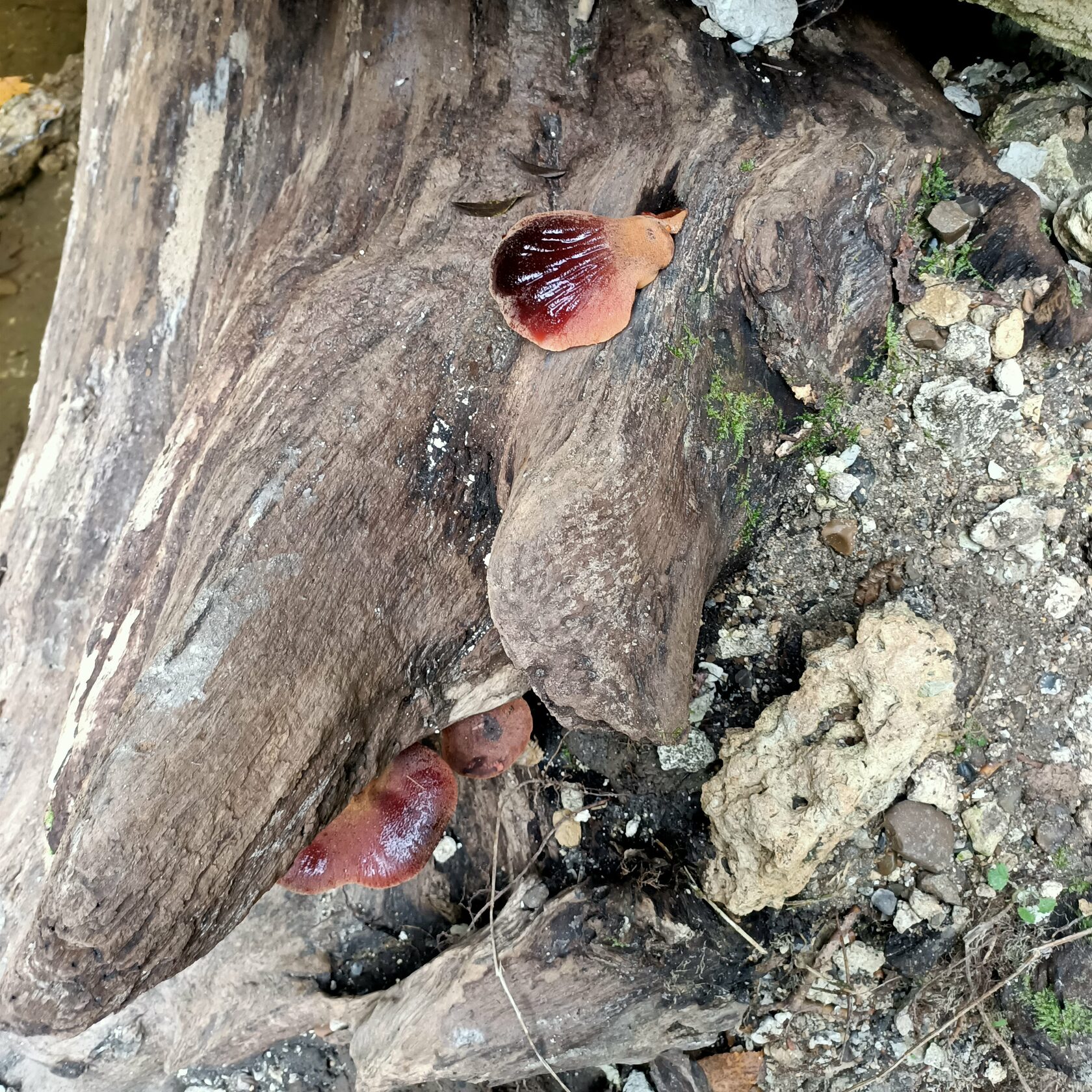
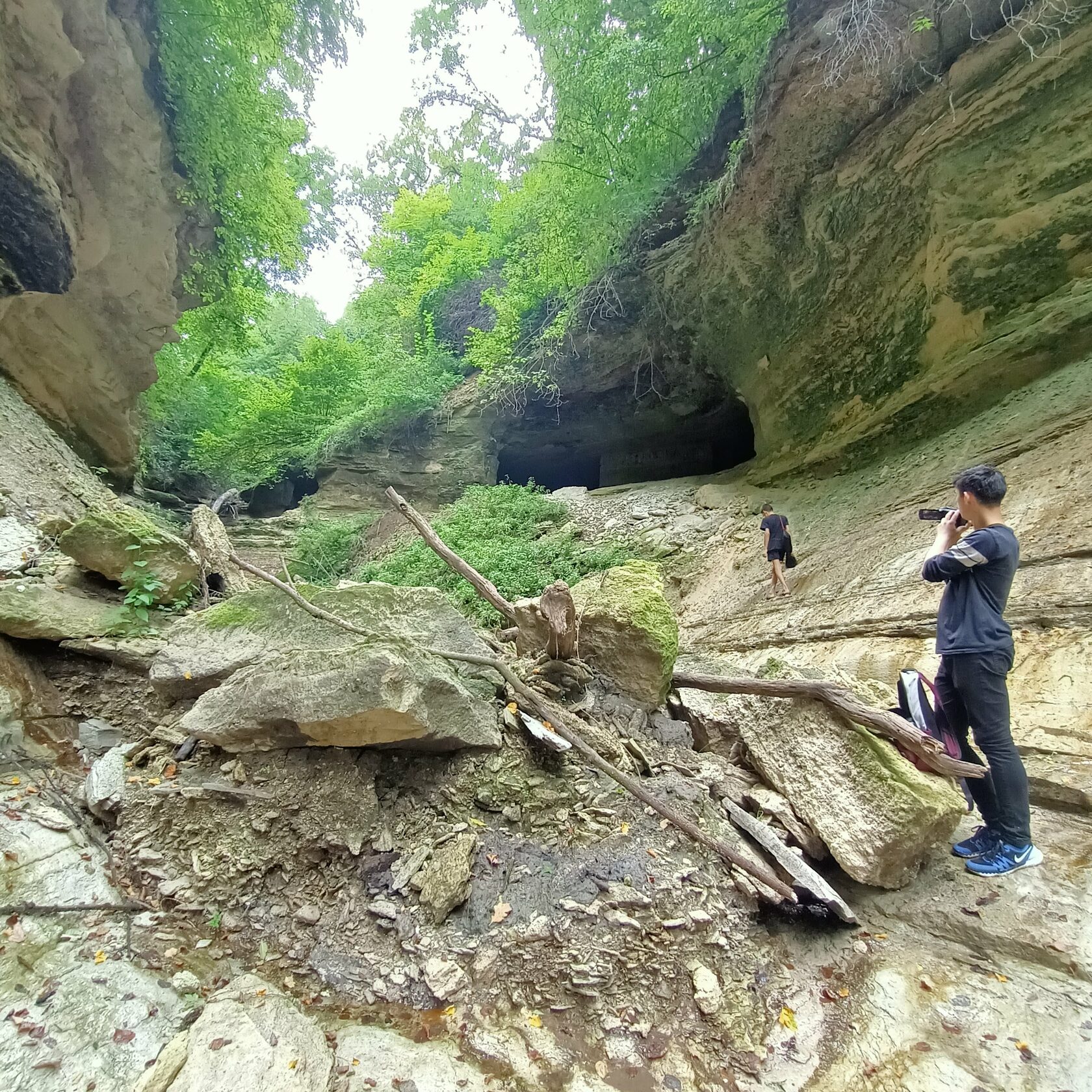
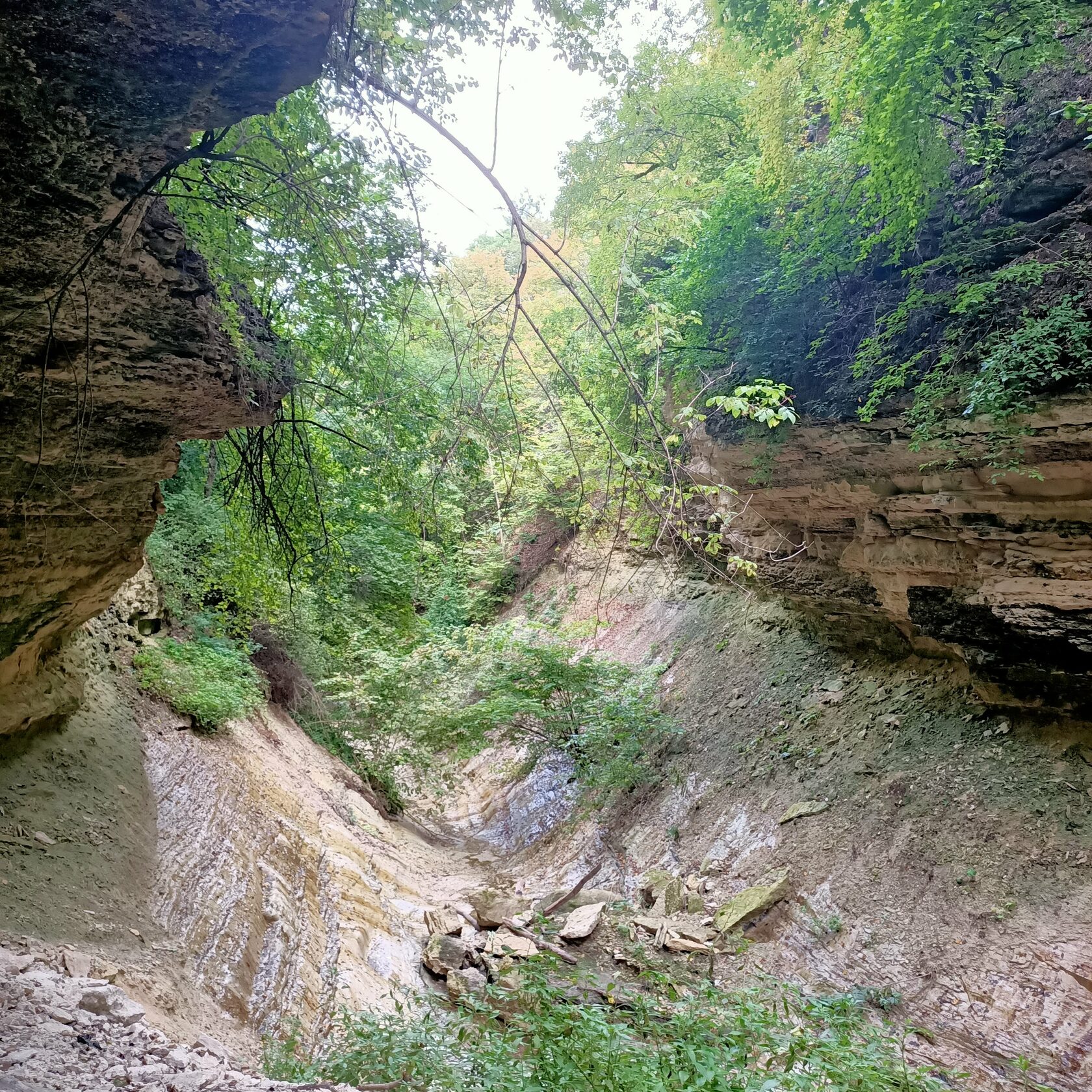

The old couple takes us on the river bank. “If you get on the boat and sail on the river, watching the forest… It’s such a beauty!,” Gheorghe tells us with excitement. He walks slowly and looks towards Nistru, watching the swans, the forest. “The air in Vîșcăuți almost makes you drunk,” he adds. He is followed by his wife Liuda and Daniel, a boy from the neighborhood.
They want to visit the three springs. It is said that the water of each of the springs has distinctive tastes. When they get to the place, they can see tourists’ traces: campfire ash, some pieces of paper. Tourists are not uncommon in these places. Gheorghe tells us that they come with their tents and spend a couple of days here fishing. He likes spending time with them. “All of them say that this is a nice quiet place”.
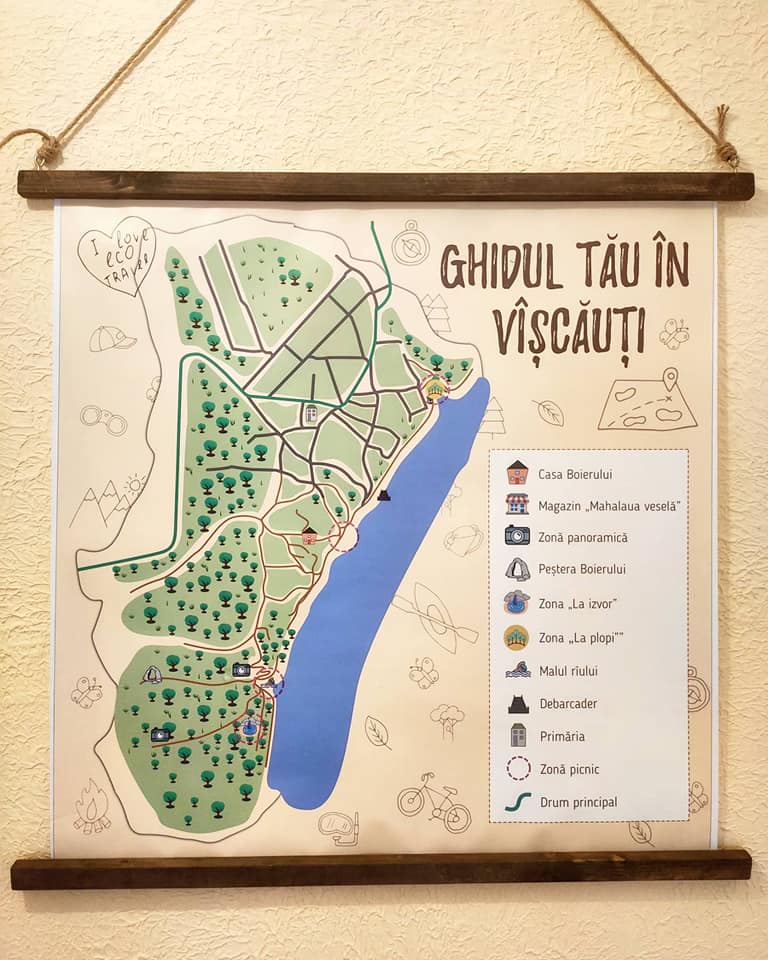
Map drawn for the tourists who visit the Boyar’s House
In Vîșcăuți you can rent a boat from the locals. You can also buy homemade bread, wine and free range chicken, fresh river fish, home grown vegetables. The village also has a beach, a picnic area, a wharf and a neighborhood called “The joyful neighborhood” due to the events organized here. From time to time, people gather here and cook fish soup or barbeque, they play some music, dance and party.
“The hill of Chirița” opens a view of Nistru river and the surrounding areas. “Now everything has dried-up… But when it’s green, the flowers there are wonderful!,” says Gheorghe.
“In Rață’s music video they showed the entire village. They filmed the forest and our meadow”, recalls Gheorghe. “There is also a song – My meadow. He sang it on TV many times,” adds Ludmila.
„Over the mountain, over the river – is my meadow,
Sometimes yearly, sometimes late – I take a walk there,
Over the mountain, over the river – flowers and roses,
Over the mountain, over the river – hidden memories.”
The lyrics to the song “My meadow”, sang by Moldovan singer Ion Rață, born in Vîșcăuți, where the music video was filmed.
Since the pandemic started, Ludmila and Gheorghe appreciate life in the village even more. “When the pandemic started, everyone was so agitated and scared. When we were in Chișinău, we would see all the ambulances and police cars throughout the entire city. But when we came here, it was like coming to heaven. When you get in the yard, you don’t need the mask any longer. We are peaceful here and we see to our chores. In Chișinău we didn’t have anything to do, except sitting on the benches outside. But here we exercise, we grow vegetables, fruits, we make canned food for winter,” Ludmila explains. She appreciates the tourists visiting the village, because the people have the opportunity to sell something to them. “They really don’t have a way to sell something in the village, no means to make a living.”
The luck and the happiness to be born at the river
Because the village is located on the banks of Nistru, the river is the one dictating the life in the region: it gives people water, it gives them food, but also leisure areas. Gheorghe remembers that especially during the soviet period he would visit his relatives on the other side of the river, in the village of Harmațca. They would barbeque under the willows near the river and then cross Nistru and continue their party under the willows of Vîșcăuți.
At the guest house, while stirring the pot roast, Lucia is humming a sad song. She is absorbed by the process and lets herself caught up in the moment:
Nistru, don’t drown me,
Nistru, don’t drown me,
Shai-rai-rai-ra, Shai-rai-rai-ra.
You don’t have the money to burry me,
You don’t have the money to burry me,
Shai-rai-rai-ra, Shai-rai-rai-ra.
“I woke up to this song. I woke up with my grandparents, with my parents, with the entire village singing it, and we learned it.” She grinds some cheese on a plate, and on another she puts some parmesan – so it’ll be tastier with the mămăliga. She puts some clay plates on the table and invites the guests.
“I am very proud to be born near the river,” says Lucia. She has happy memories of her childhood, when the winters were colder and the ice on the river could reach even 1 meter in depth. “Cars and tractors, even trucks with gas tanks would cross Nistru, driving towards the Transnistrian region,” she explains.
1 434 |
1 210 |
People live in VîșcăuțiSources: BNS, 2014 |
People live in HarmațcaSources: dubossary.ru, 2013 |
Even today, the bond between the two river banks is not lost. Lucia has relatives living in the village across the river, in Harmațca. “We have brothers and sisters, we have cousins, we are all related to each other. Because it’s a whole.”
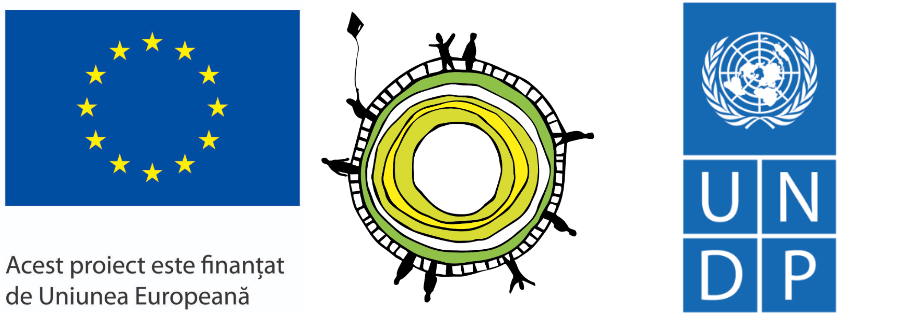
Produced with the financial support of the European Union within the “Support to Confidence Building Measures” project, implemented by UNDP. The opinions expressed in this material do not necessarily reflect the official position of the EU or UNDP.
Economy
Romania and Moldova signed a partnership memorandum pledging to cooperate in promoting their wines
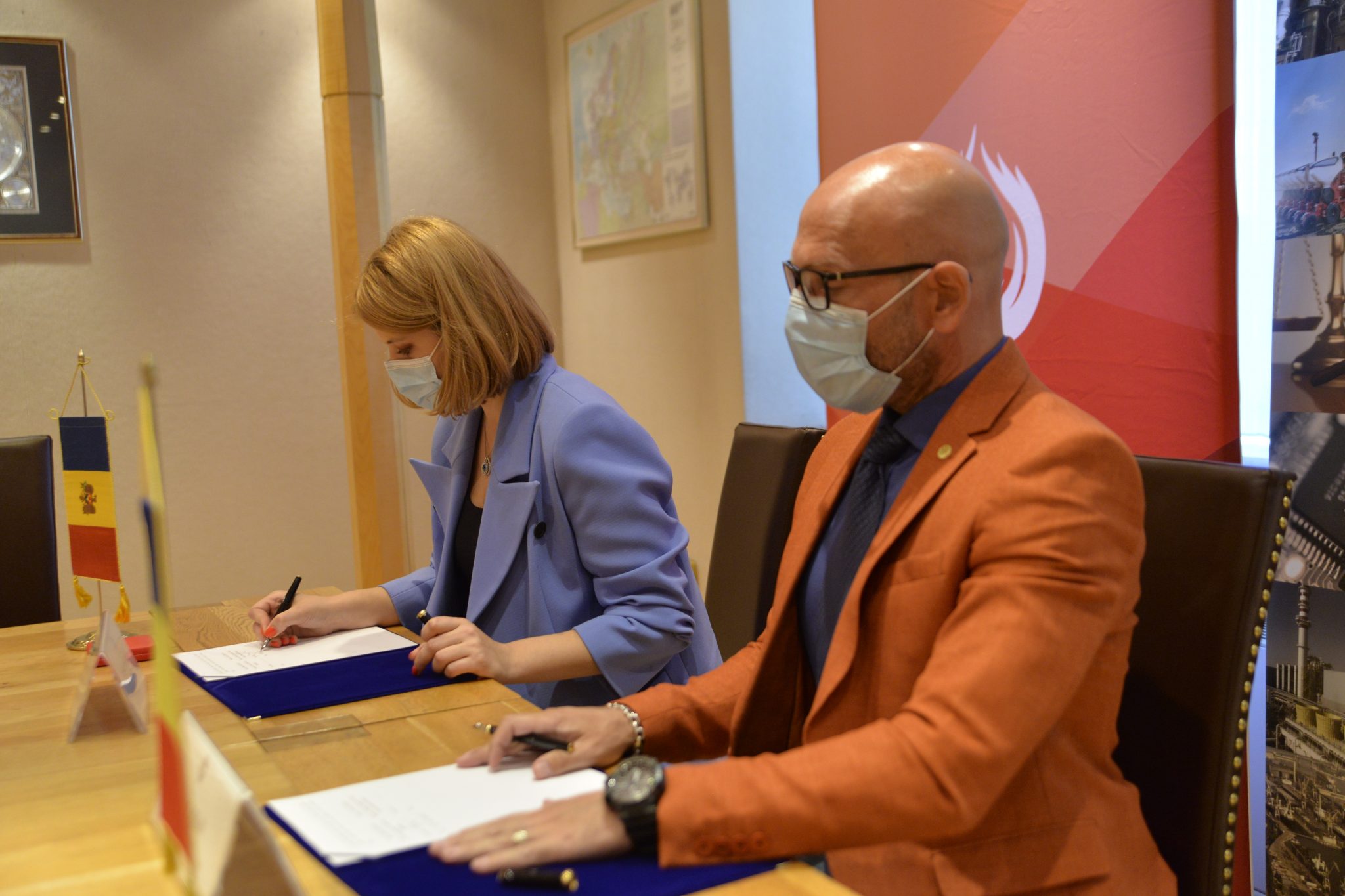
Reading Time: 2 minutesThe Chamber of Commerce and Industry of Romania (CCIR) and the National Office for Vine and Wine (NOVW) of the Republic of Moldova signed, last week, a memorandum of cooperation on organizing joint promotional activities in the markets of common interest, as the CCIR announced.
China, Japan or the USA are just some of the markets targeted by the Romanian and Moldovan institutions. The memorandum also involves advertising activities for wines from common indigenous varieties, promoting the oeno-tourist region, developing a tourist route in the two states, exchange of experience, study visits, and mutual support in identifying new export opportunities. “We are very confident that this collaboration between our organizations will lead to sustainable economic growth and a higher degree of well-being among Moldovans and Romanians,” claimed Deputy Secretary-General of CCIR, Bogdan Visan.
On the other hand, Director of the NOVW, Cristina Frolov, declared that no open competition with Romania is aimed at the governmental level of the Republic of Moldova. “This request for collaboration is a consequence of the partnership principle. Romania imports 10-12% of the wine it consumes, and we want to take more from this import quota. Every year, the Romanian market grows by approximately 2.8%, as it happened in 2020, and we are interested in taking a maximum share of this percentage of imported wines without entering into direct competition with the Romanian producer,” the Moldovan official said. She also mentioned that Moldova aims at increasing the market share of wine production by at least 50% compared to 2020, and the number of producers present on the Romanian market – by at least 40%.
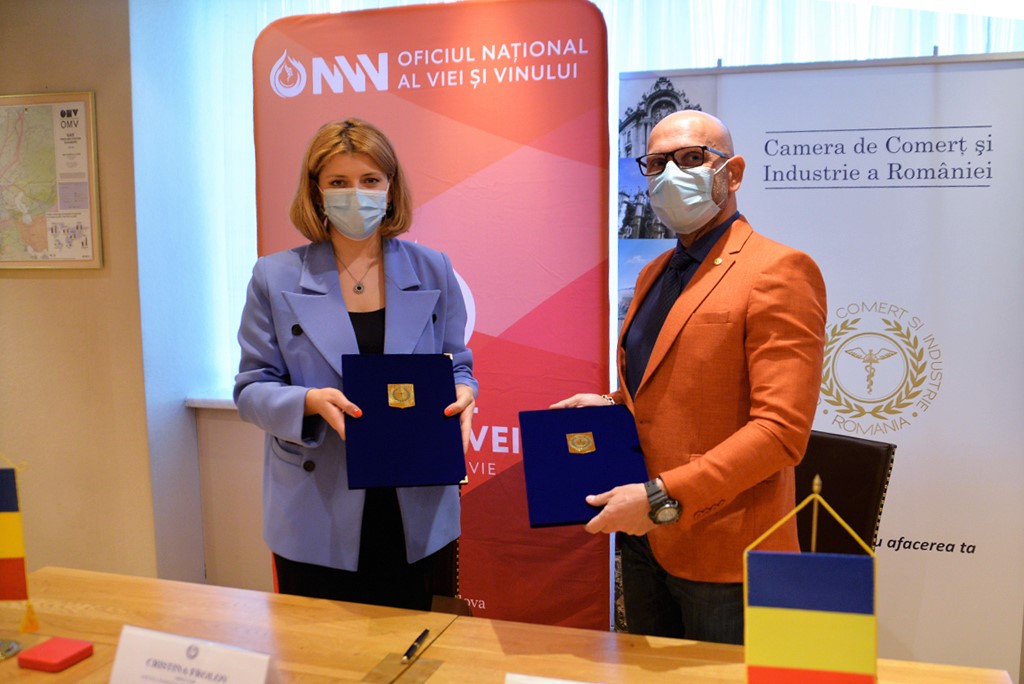
Source: ccir.ro
**
According to the data of the Romanian National Trade Register Office, the total value of Romania-Moldova trade was 1.7 billion euros at the end of last year and over 805 million euros at the end of May 2021. In July 2021, there were 6 522 companies from the Republic of Moldova in Romania, with a total capital value of 45.9 million euros.
The data of Moldova’s National Office of Vine and Wine showed that, in the first 7 months of 2021, the total quantity of bottled wine was about 27 million litres (registering an increase of 10% as compared to the same period last year), with a value of more than one billion lei, which is 32% more than the same period last year. Moldovan wines were awarded 956 medals at 32 international competitions in 2020.
Photo: ccir.ro


